Capital:
Damascus
Currency
Syrian pound
Best time to visit:
Climatically speaking: spring (from mid-March to late April) and autumn (from late September to mid-October), when the heat is not too intense, are the best seasons to take a trip to these parts. In winter, there can be heavy rains in January and February. Leaving during Ramadan, when many exercises have limited hours, requires some planning.
In a word:
Marhaba (hi)
Vaccines
None
At the table:
The bread (khobz or pita) is delicious and is present at every meal on the table. It goes well with mezze, originally from nearby Lebanon, which give children the opportunity to taste many different dishes. Young carnivores will love the shawarma, sandwiches filled with mutton or chicken cooked on a spit and sold everywhere.
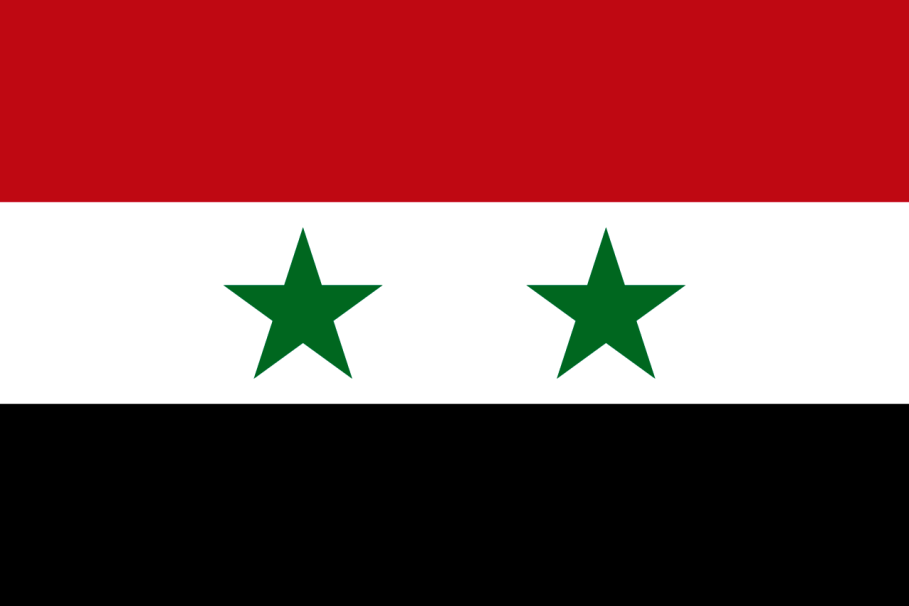

Warnings:
- The situation is so unstable and dangerous to avoid, for quite some time, travel to Syria.
Essential experiences:
Get lost in the magnificent Aleppo souq; Stroll along the ruins of the mythical Palmyra; Admire the sunset from Crack del Cavaliere
By now, when Syria is mentioned, images of devastation, war, broken dreams, pain appear immediately and only, but Syria was anything but a few years ago. I was lucky enough and honored to visit and experience it just a few months before this devastating war.
With this reportage I want to show a face of a land different from the imaginary that has now been created, the face of its people unaware of what, shortly thereafter, would change their existence forever, the faces of children, of sites historical and archaeological that no longer exist; of a life that I hope will soon be able to flourish again. Everything that I tell no longer exists but I am pleased to share it because it existed!
This is the story of my experience in Syria!
Our suggested itinerary (15 days) | |
four days: | Damascus, Bosra (visit to the Nabatean city), Shabba (mosaics) |
four days: | Hama (Norie Bechriyyat), Crack des Cavaliers, Maalula (visit St. Thecla Monastery, St. Sergius Monastery, Mar Misa Monastery) |
three days: | Apamea and Palmira (visit to archaeological sites), Dura Europos (visit to the fort), Mari, Deir ez Zur |
four days: | Aleppo (visit to the church of S. Simeone, Citadel and souq) Ebla (visit to the archaeological site), Sergilla (visit to the dead city) |
The first impact with the Syrian capital is strong ... we arrive in the middle of the night (around 3.30) on a Friday of Islamic holiday ...
The city had already been asleep for some time, even if every now and then some characters appeared: the tire dealer open 24 hours a day who dozes in his armchair, the old man wrapped in his brown turban climbing the stairs of an unspecified building, the doorman of our historic hotel who suddenly saw some Italians appear, tried by the tiring and boring travel…
This city is very mysterious and gives me the idea of conspiracies, plots, betrayals ... it intrigues me a lot ...
Our hotel is colonial style and very old, not ancient, just old and run down ... almost creepy, those huge (empty) rooms, the long silent corridors ...
A morning spent among the Greek, Roman and Phoenician memories in the immense national museum that did not impress me so much ...
What I love, however, is wandering aimlessly through the streets of the city, I am fascinated by watching the life of the locals go by, drinking an orange juice and getting lost in the scents of the spices of the souqs ...
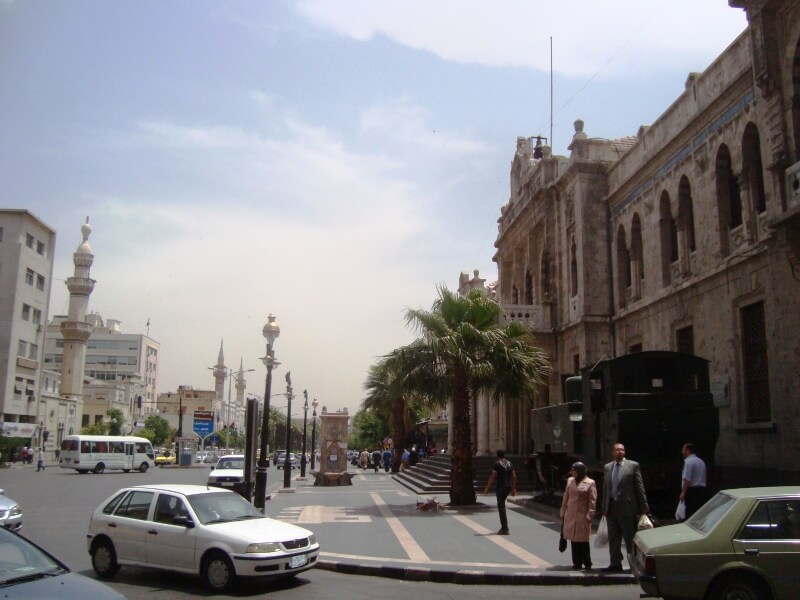
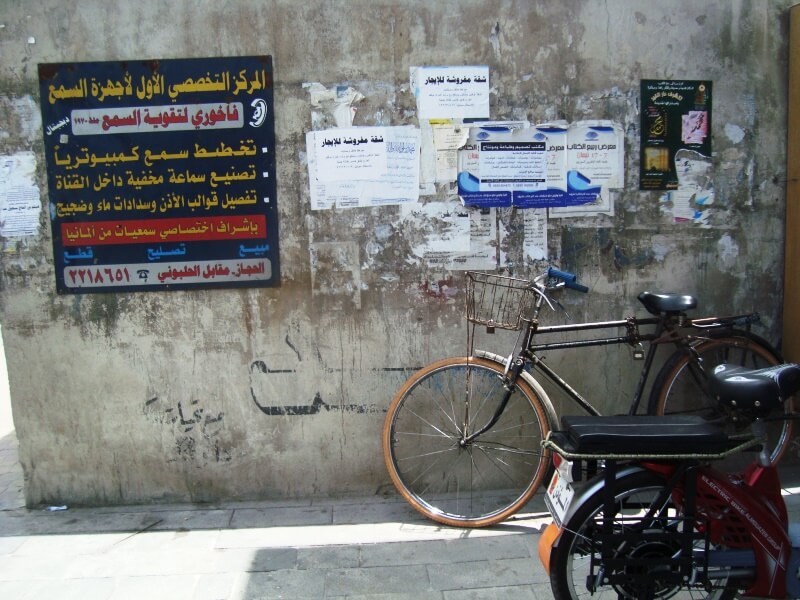
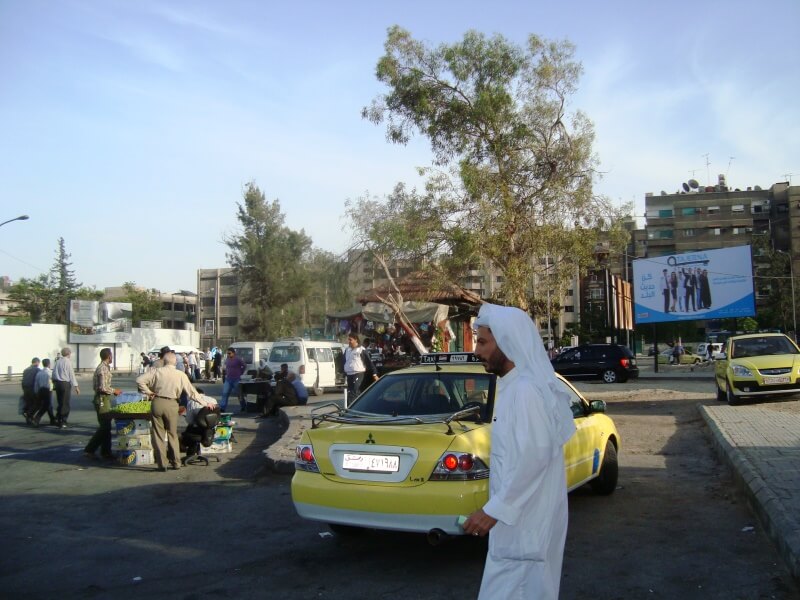

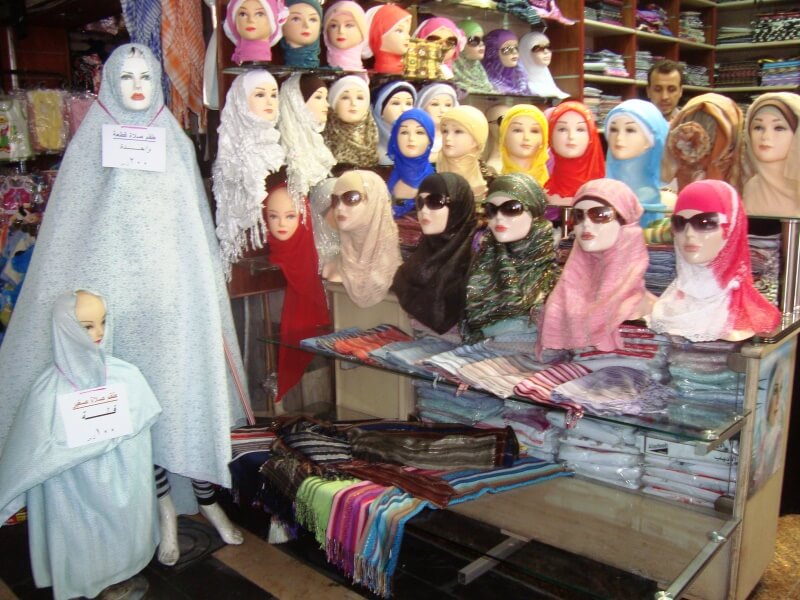
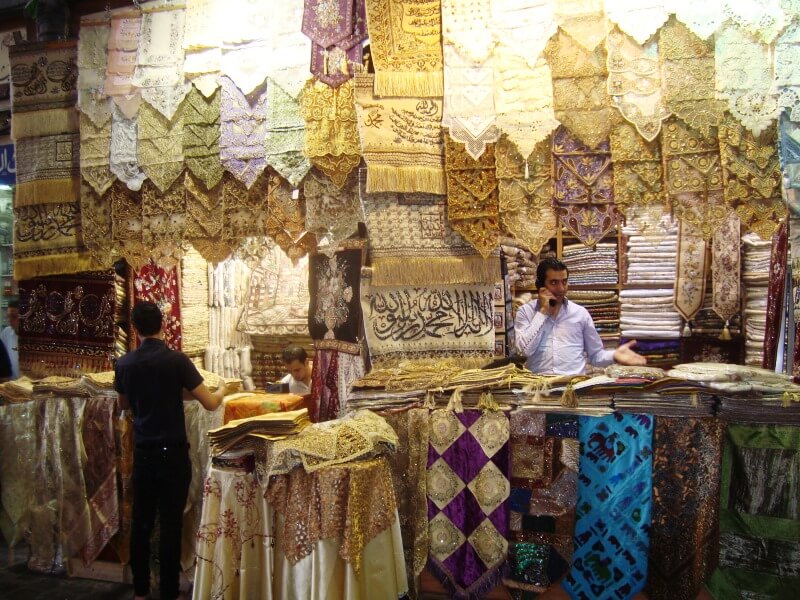
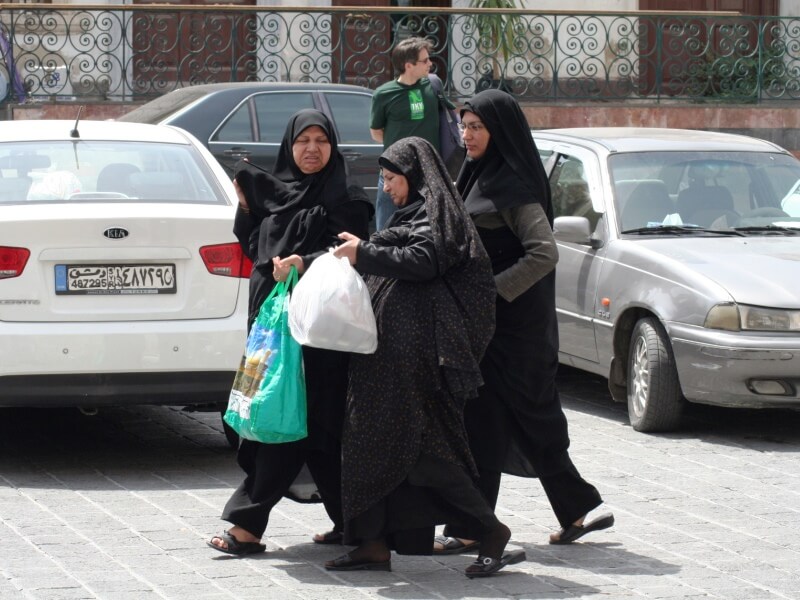
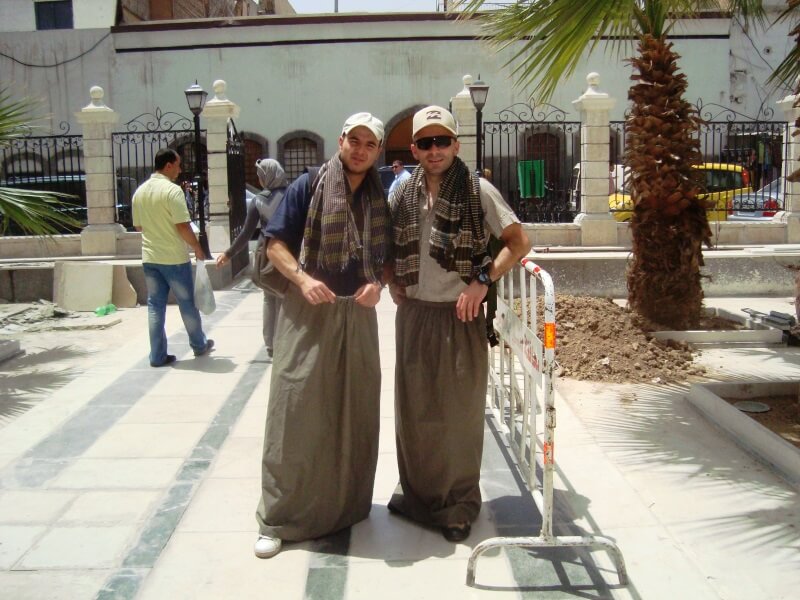
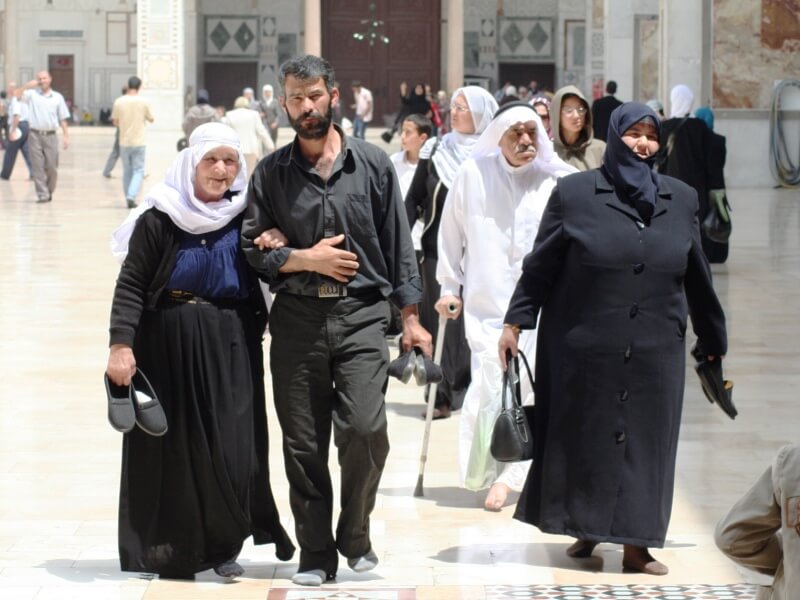
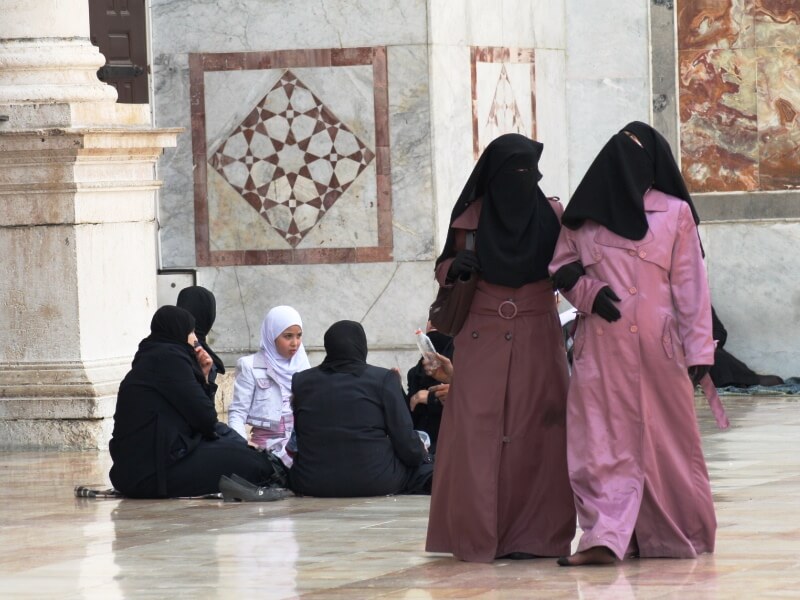
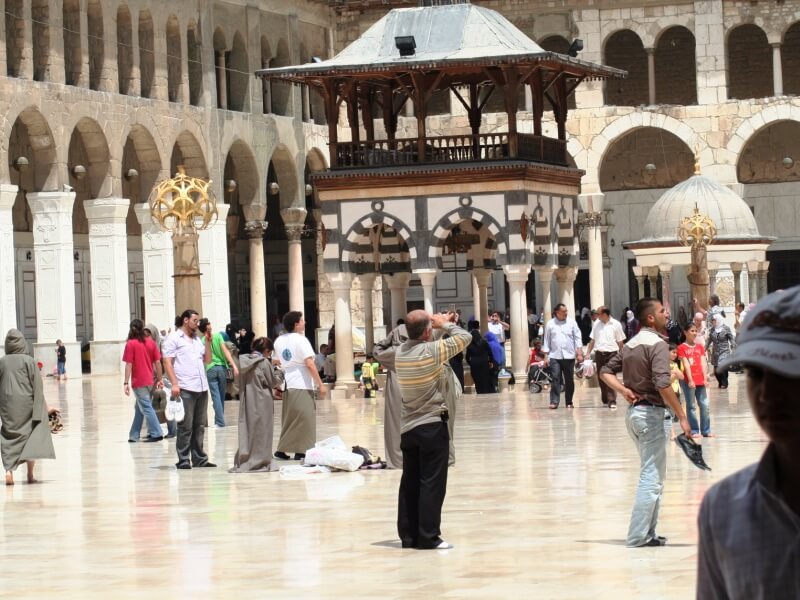
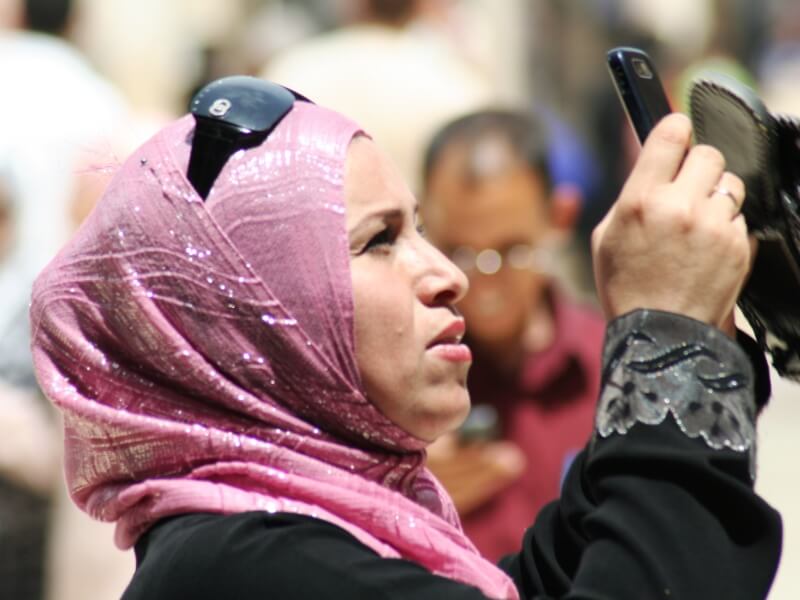
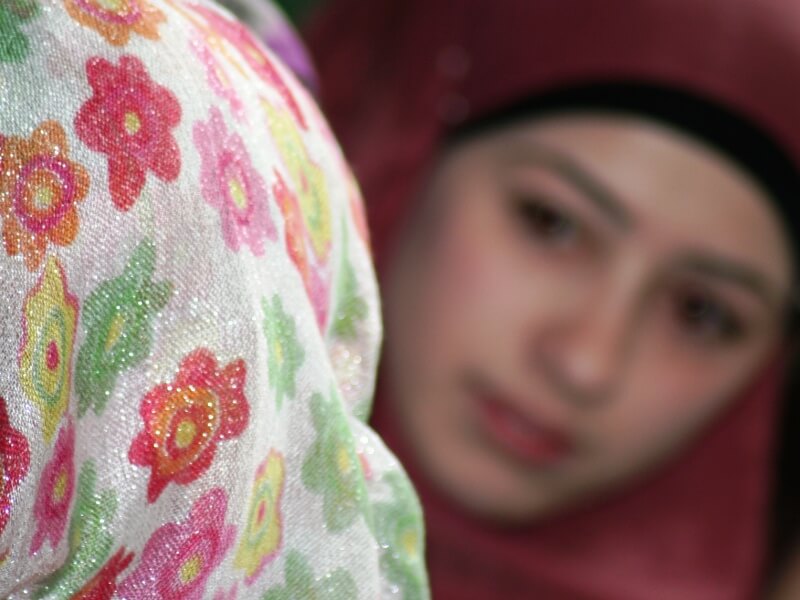
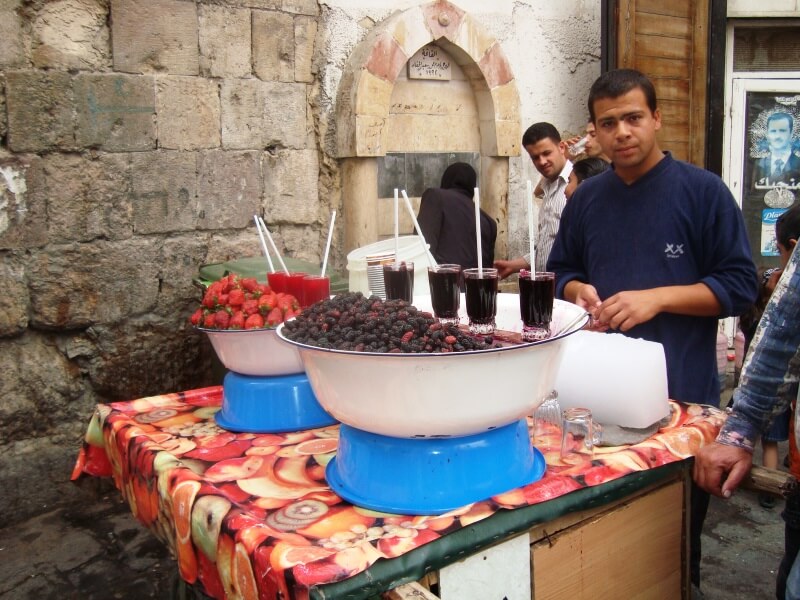
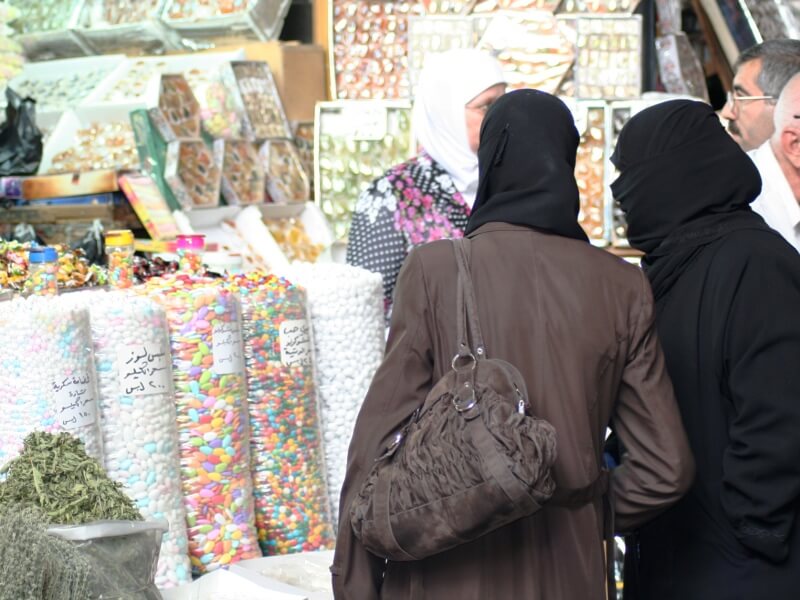
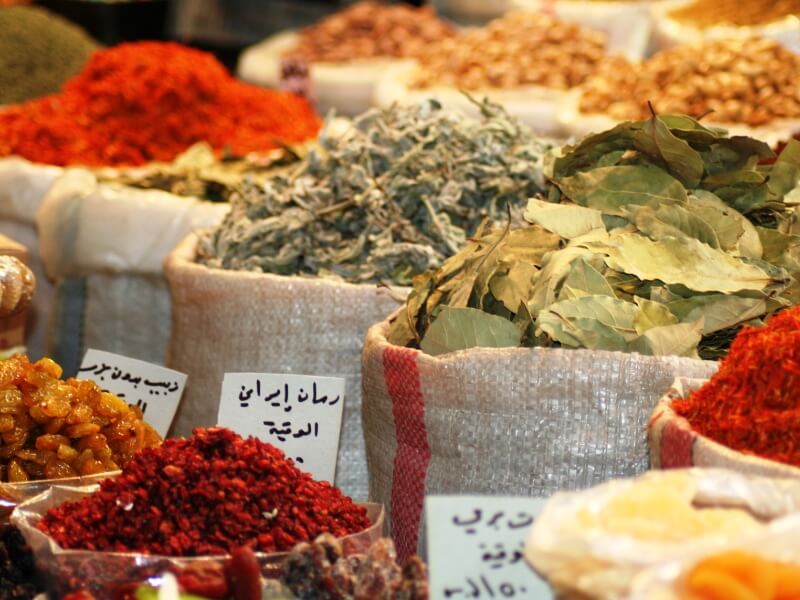
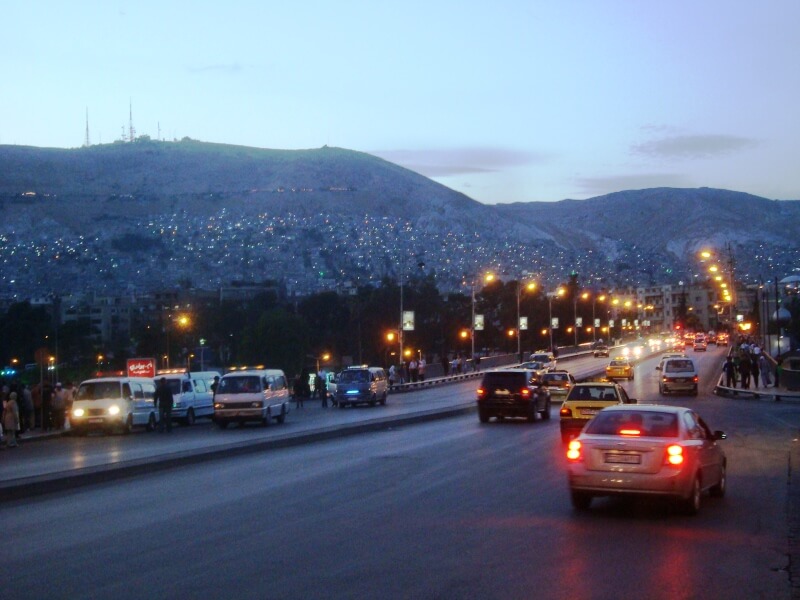
Today we visit Bosra, a Nabatean city, which dates back to the time of Petra, and which is only 100 km away.
In Syria the monuments are not valued, indeed Bosra itself was inhabited by Syrians until a few years ago ...
From Bosra we go to Shabba to see some mosaics and immediately after we move to the mosque of Sayyida Zeinab, dedicated to a relative of Mohammed ...
Inside the mosque there was an Arab who invited some women in black chadors to repent for the death of Hassan, Alì's nephew (???) ... and they were crying desperately ...
From there we move towards the Chapel of St. Paul ... from one religion to another in a few steps!
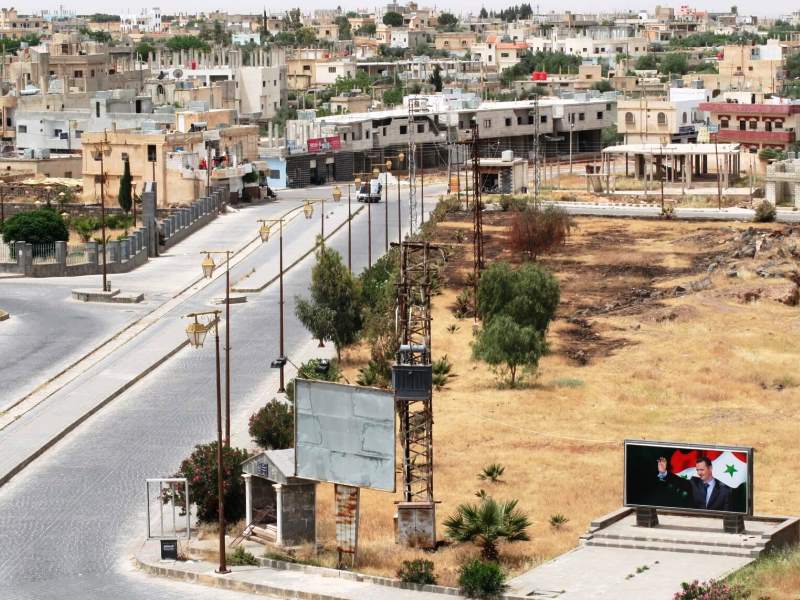
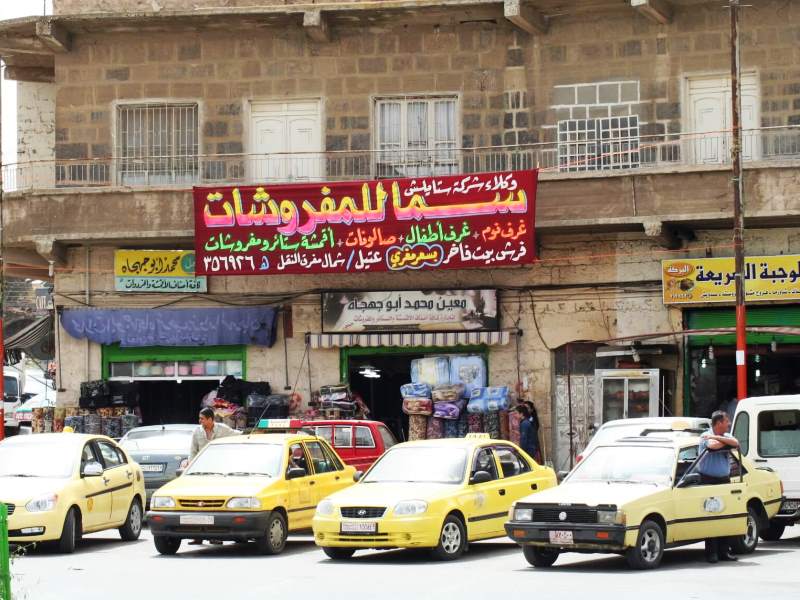

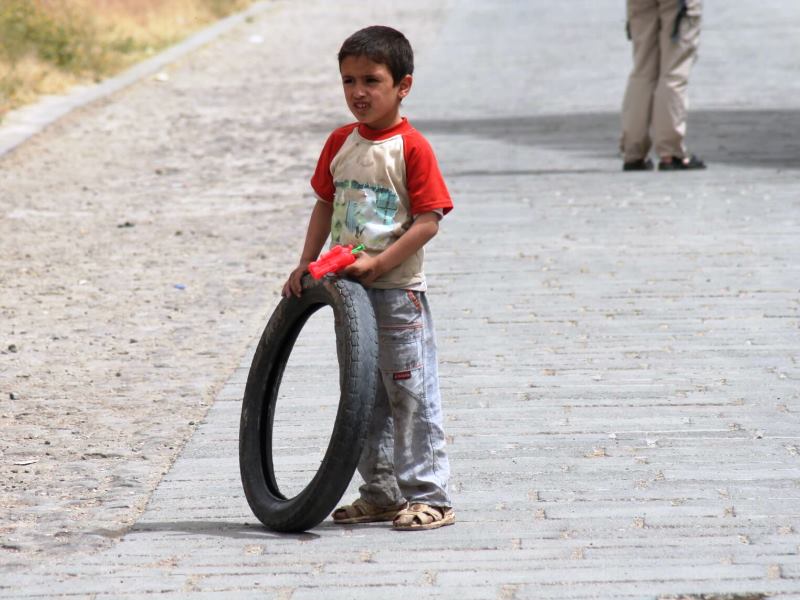
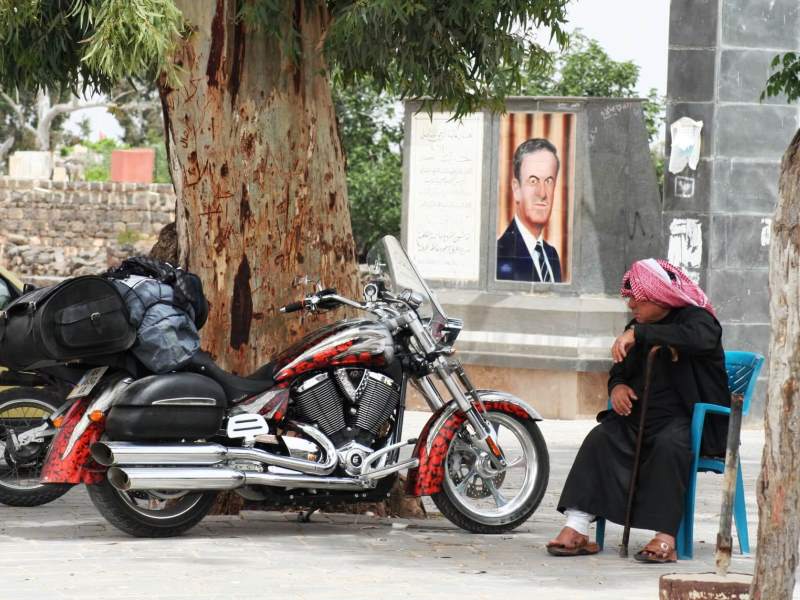
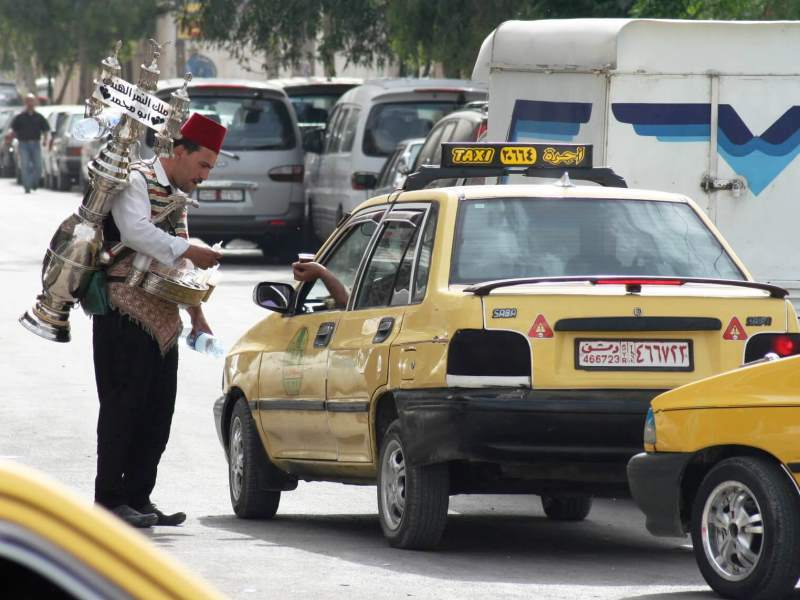
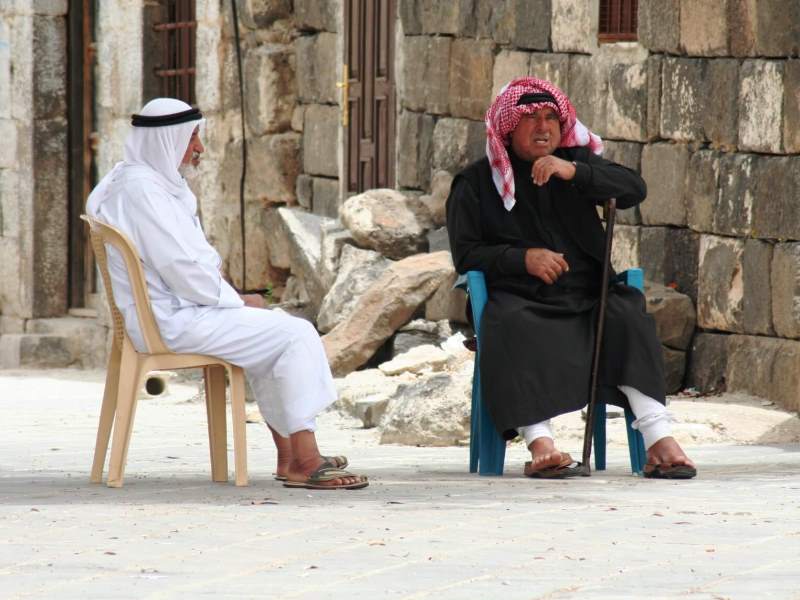
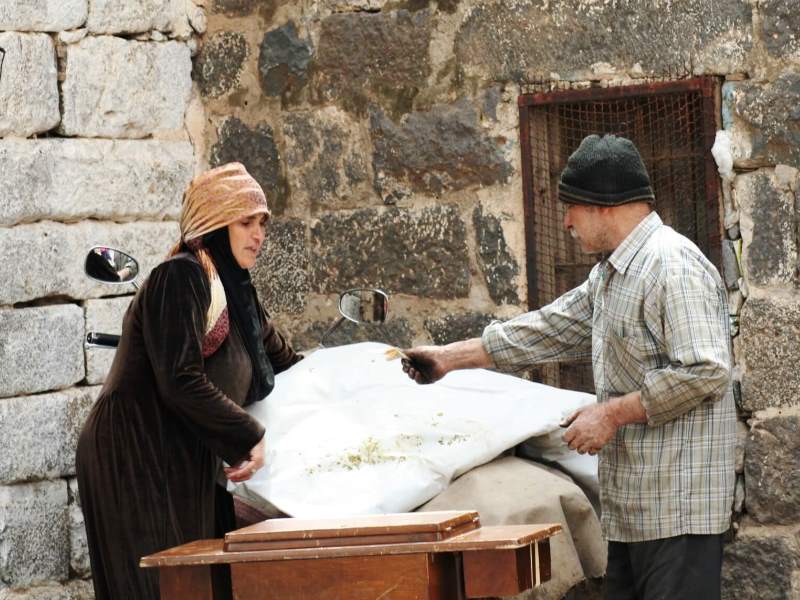
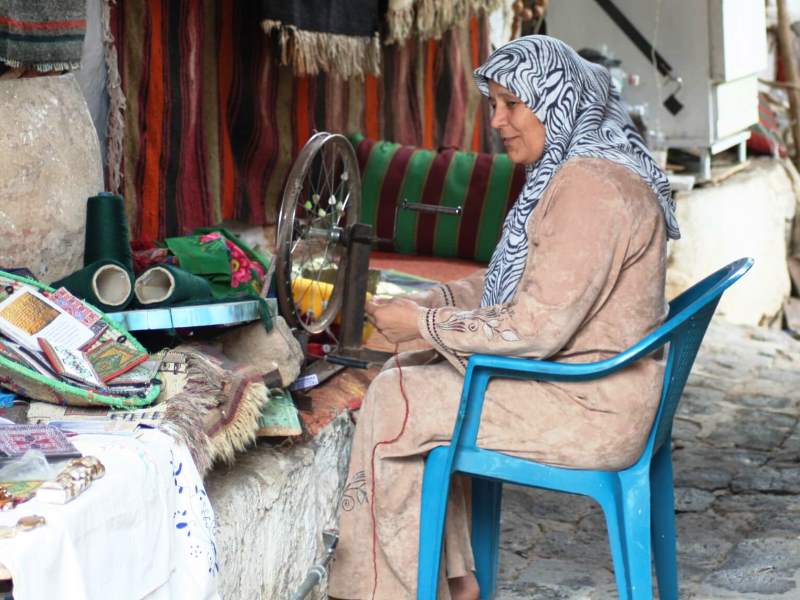
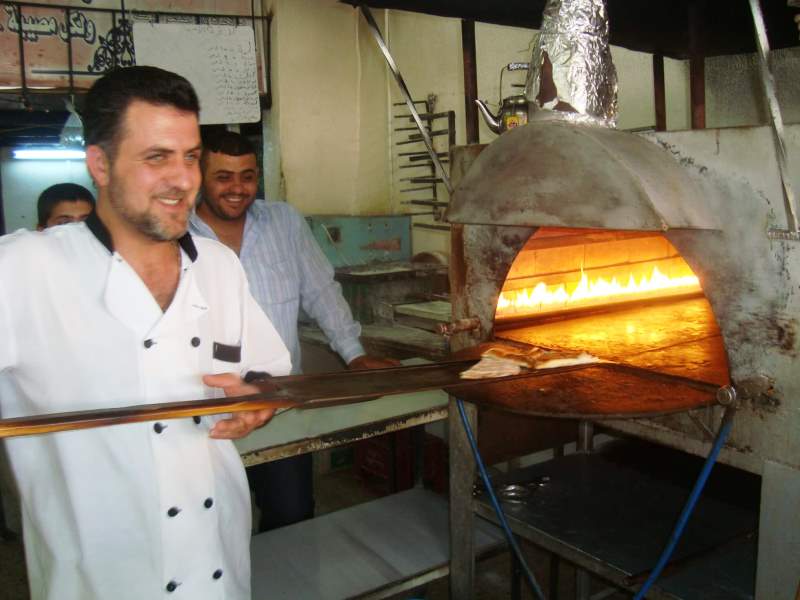
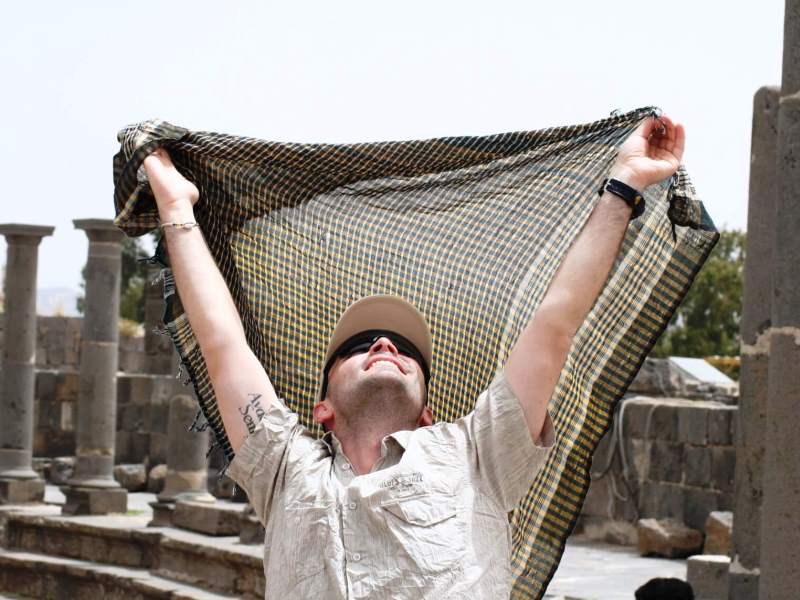
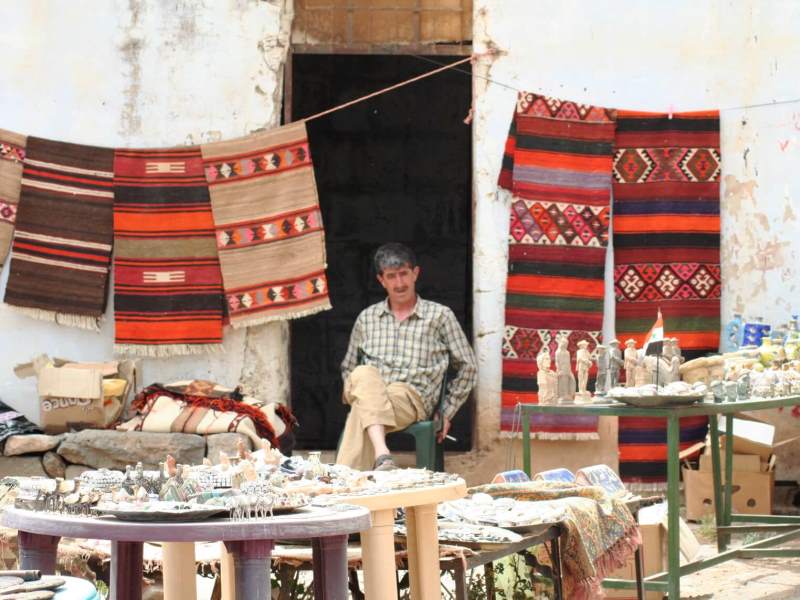
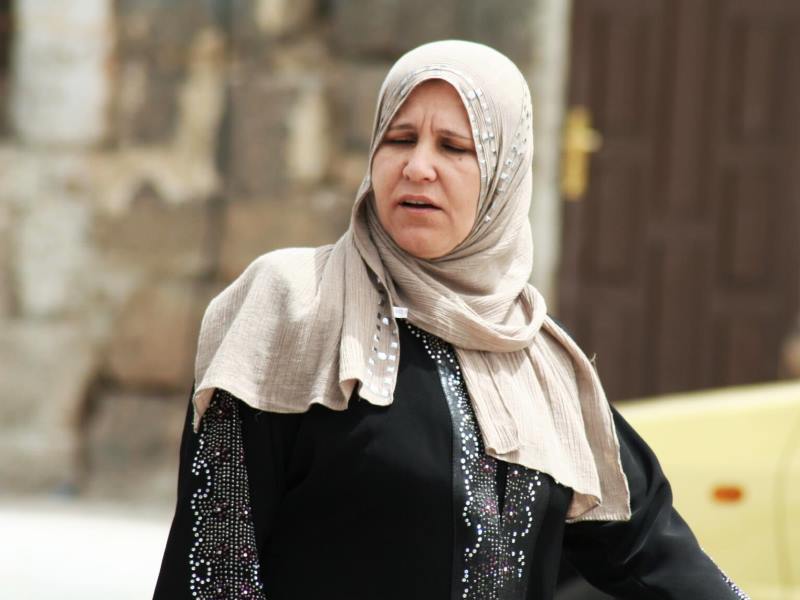
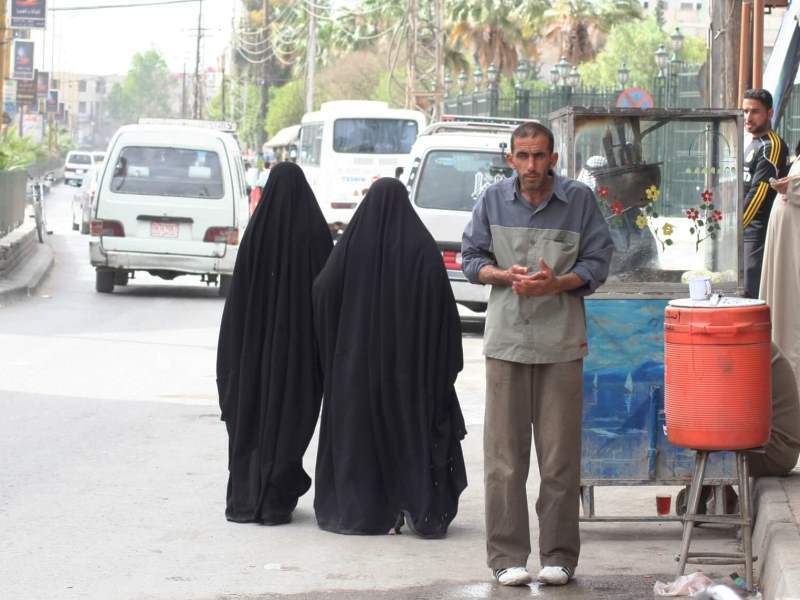

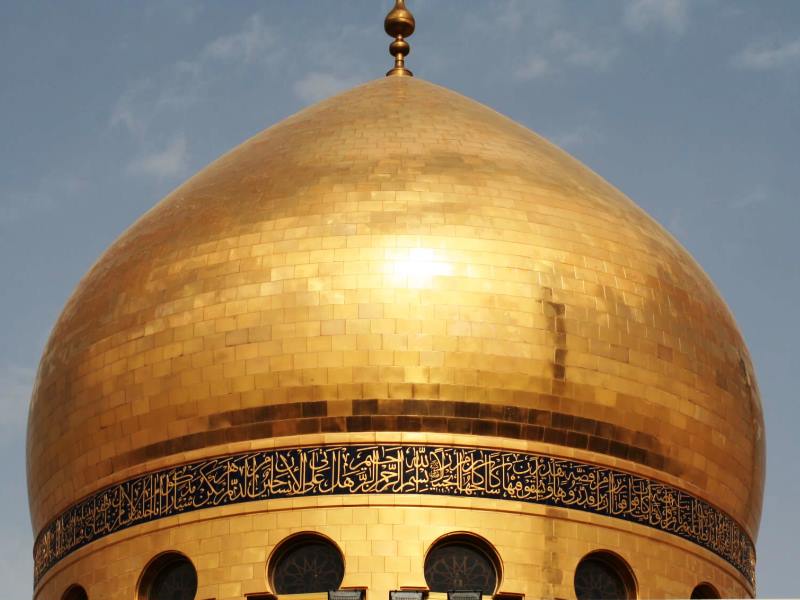
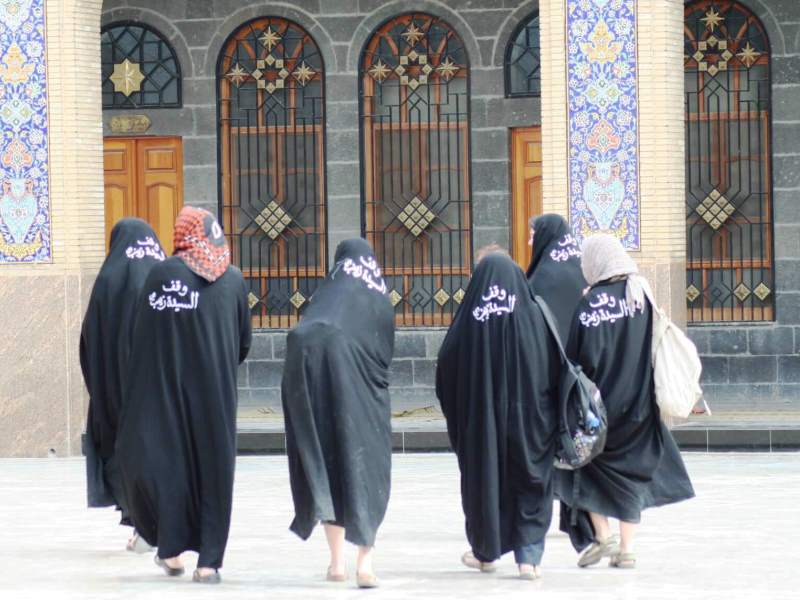
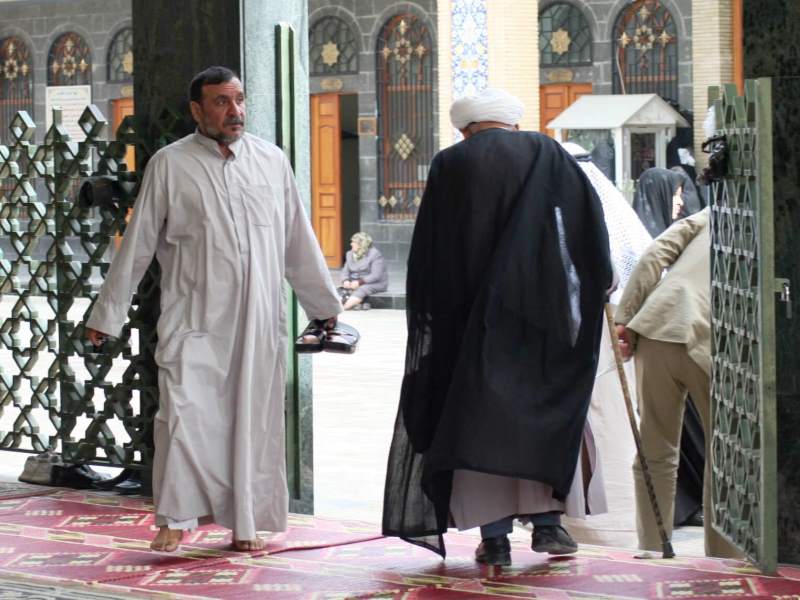
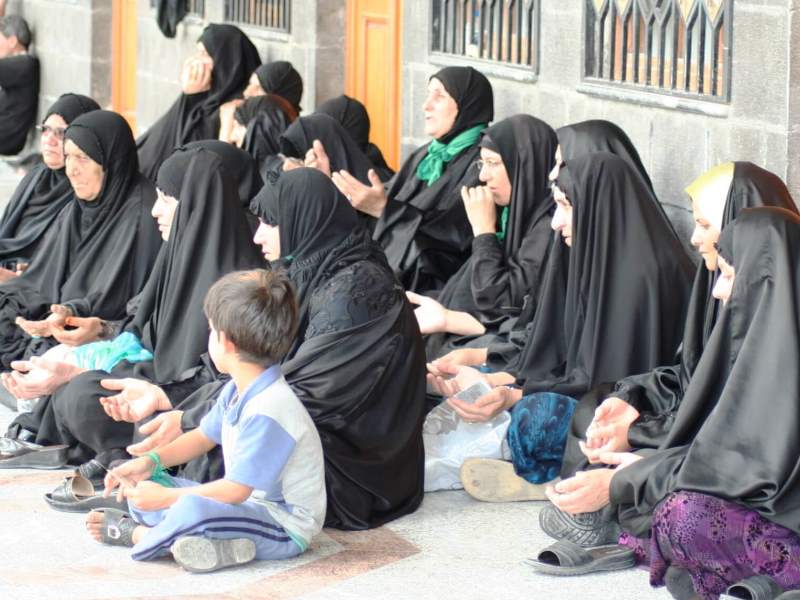
Maalula introduced us to the Monastery of San Sergio and Bacchus while a long gorge between the rocks led us to that of Santa Tecla.
I really liked the Monastery of Mar Musa, perched on a rocky hill, reachable only after a tiring walk ...
Through a tunnel, among a thousand frescoes, we came out into the library, there were five or six young people from all over the world writing or reading or simply relaxing ... I discovered that they were travelers who had stopped there for a few days, I wondered how they managed to get there or even just how they learned about it, they really conveyed an infinite sense of freedom ...
The state of decay of the various archaeological sites reigns supreme, the plain of rocky desert we crossed to reach the illuminated Hama was a plain of plastic bags ... they were hideously everywhere, stuck in bushes or larger rocks or even carried in the air who knows where from the wind ... Observing this I could not help but meditate on the sick conditions of our planet that in the West we still manage to disguise in the eyes of most while in places like this it is too obvious!
The "Crack del Cavaliere" is a castle that dates back to the time of Saladin.
I imagined how many events could have been organized in such a place: exhibitions, performances, cultural shows instead of a sad, dirty and smelly abandoned "cottage" where people urinate in the darkest and most hidden corners ...
After a long transfer, a bright Hama welcomes us in celebration with the famous “Norie Bechriyyat” (huge wheels similar to those of mills)!
Wandering around and entering among the stalls that sold plants and flowers and where the bust of President Bashir Assad is omnipresent, we let ourselves be enchanted by the sound that came from a marquee, we follow him ...
We enter and as in a time machine, setting foot inside the tent, suddenly, we find ourselves projected back in time ...
They looked like artists from the 1930s or 1940s who were performing for an audience made up of some Syrian family who laughed at each other when the dwarf clowns beat each other and were scandalized when a mime imitated a kissing couple ...
The show against all odds was a lot of fun… Acrobats, clowns, magicians, jugglers, tightrope walkers, even a woman (super covered) doing the stunts!
Very sweet is the scene of a girl enchanted admiring the clowns who suddenly turns to me and offers me some popcorn from her bag… what tenderness!
Or the two Islamic women who were trying to communicate in Arabic with Nick by pointing at the camera, we were afraid that in some way we had disturbed them or maybe they warned us that they didn't want to be photographed ... So they arranged their three girls in front of us and then a quick combed they asked us to photograph them!
The evening ends on a Ferris wheel that shows us the bright city of Hama from above.
Early in the morning we are already walking under tall Roman columns, we are in Apamea ...
It is incredible to think that the Romans came this far, not as mere travelers but as great conquerors.
350 km later Palmyra and its ruins welcome us in scorching heat!
From afar, as we get closer to the town, the long line of Roman columns becomes more and more clear ...
Palmyra experienced a period of extraordinary development in the full Roman imperial age, a caravan city, located in an oasis of the Syrian desert halfway between the Mediterranean and the Euphrates, owes prosperity and wealth to its position and to the commercial routes that crossed.
Even today Palmyra, included since 1980 in the list drawn up by UNESCO of "World Heritage" sites, continues to fascinate the many tourists - who today can easily reach it - with what appears, already at first glance , like an endless forest of columns.
The vast and rich sepulchral areas that surround the city center are also well known, characterized by large family tombs of different types, in which the famous funerary portraits of the 'lords' of Palmyra and their wives were placed: still numerous in Palmyra, they are also spread everywhere, in museums all over the world.
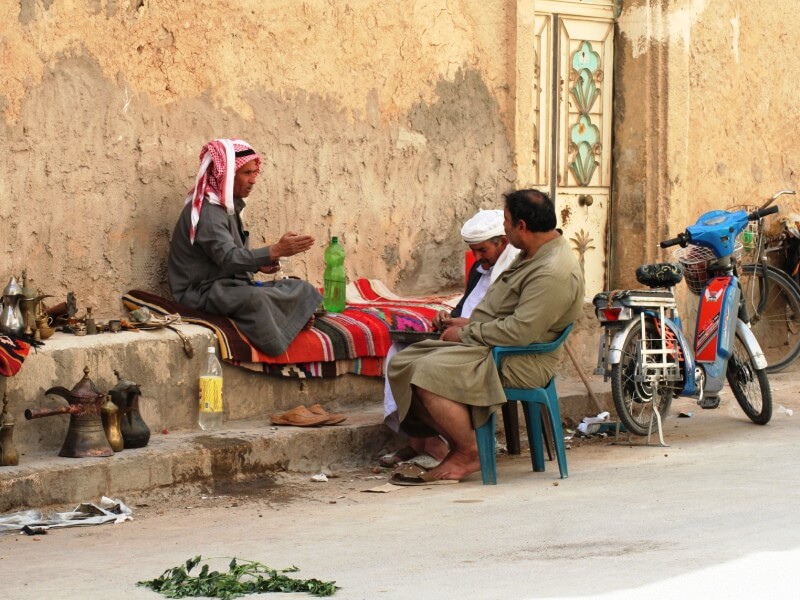
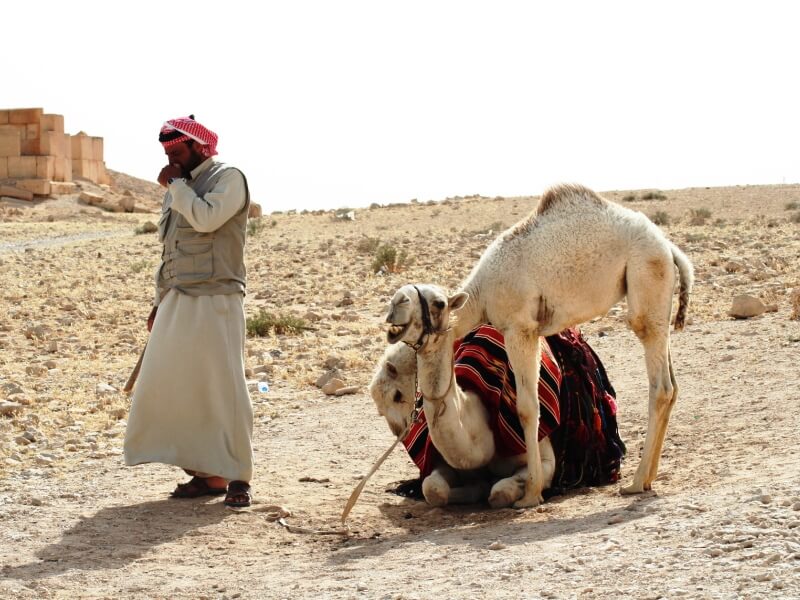
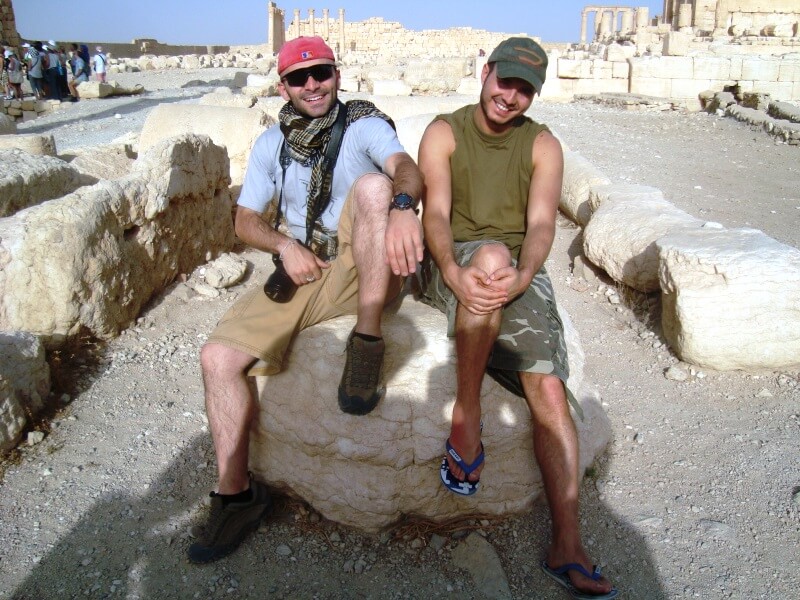
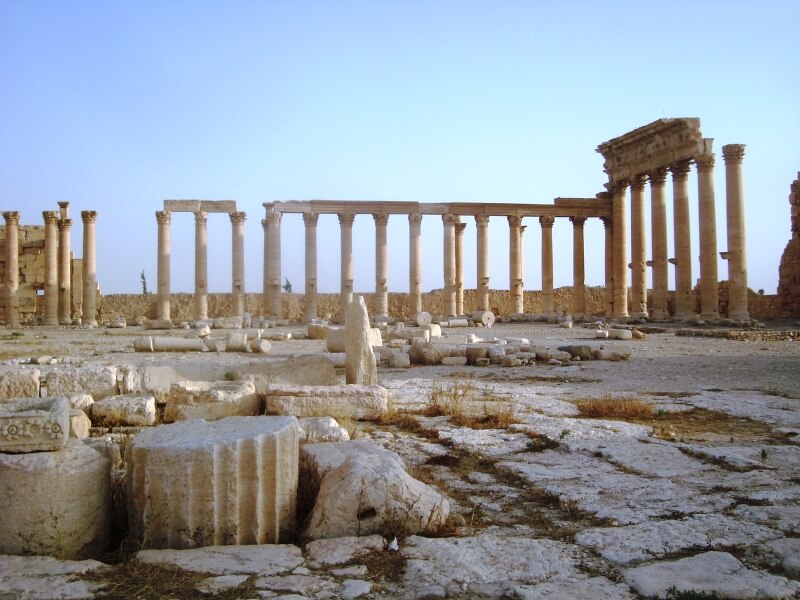
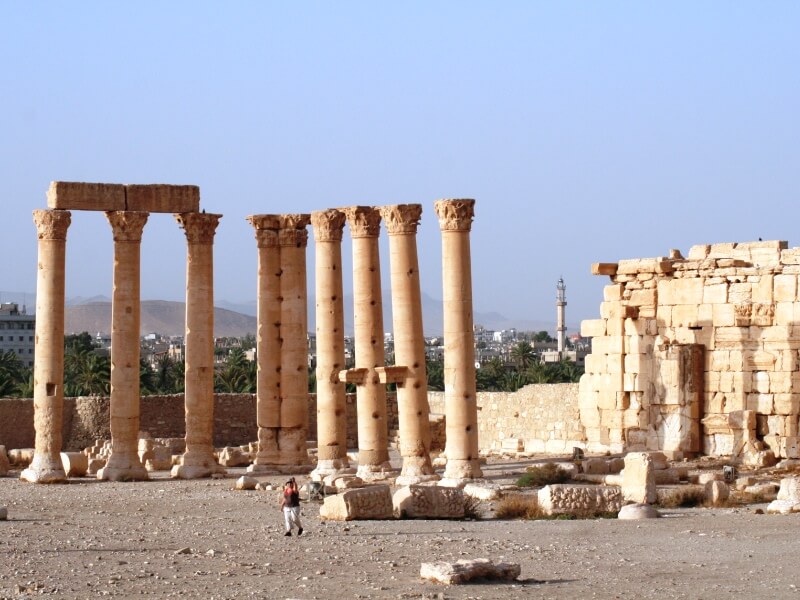
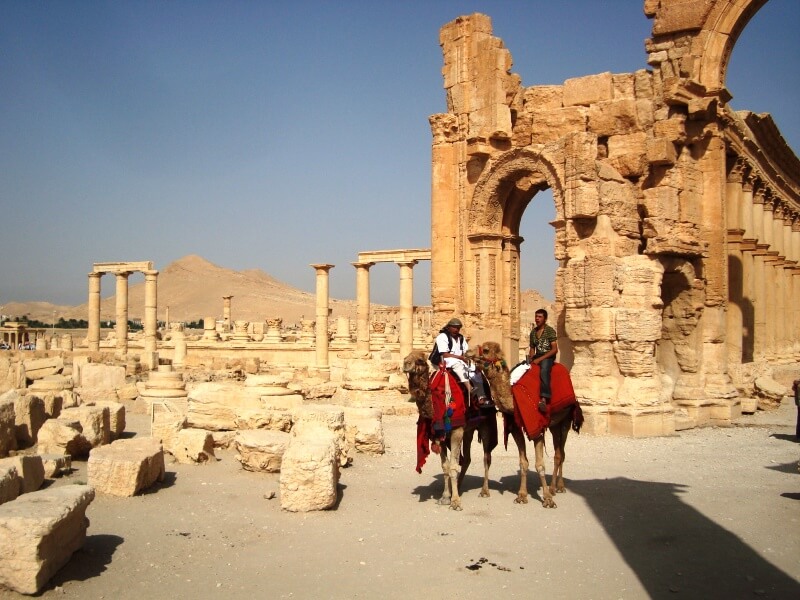
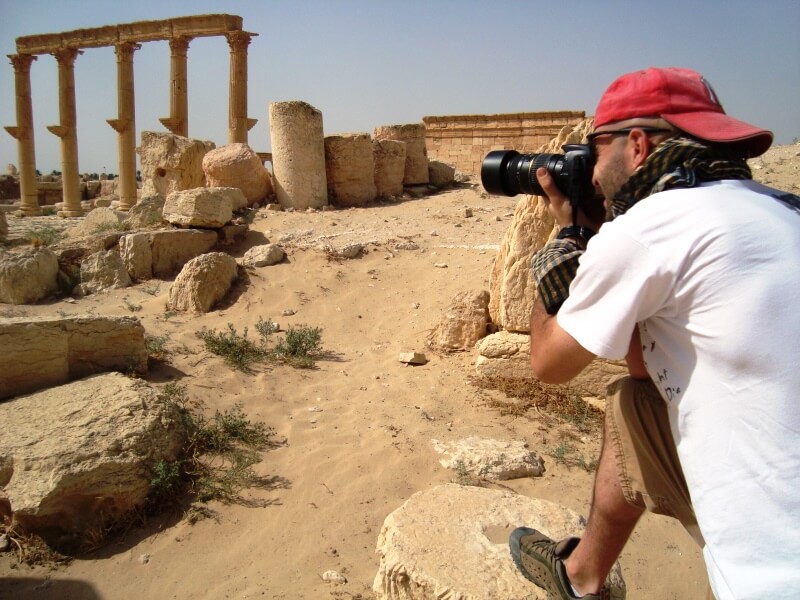
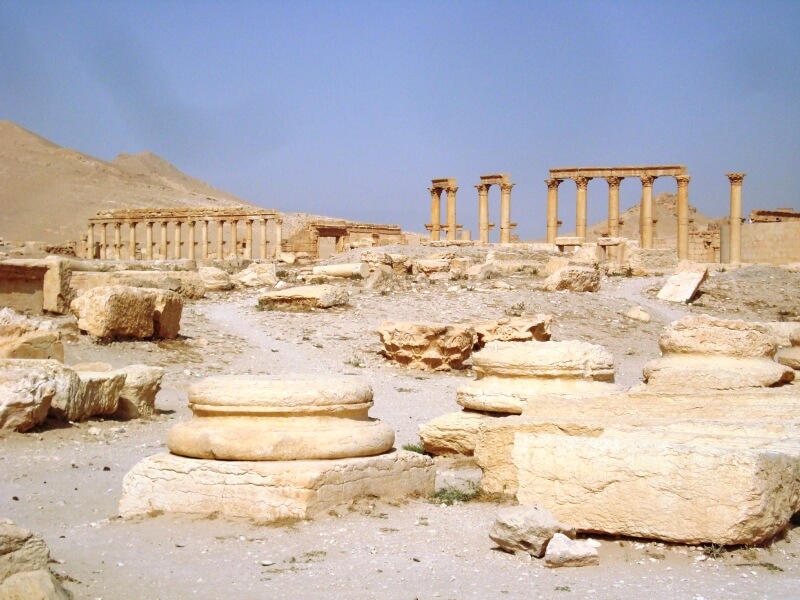
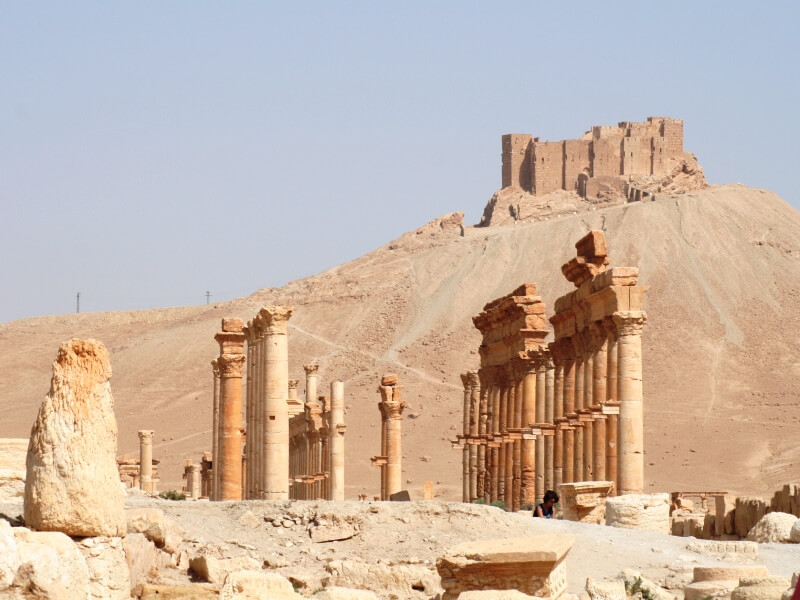
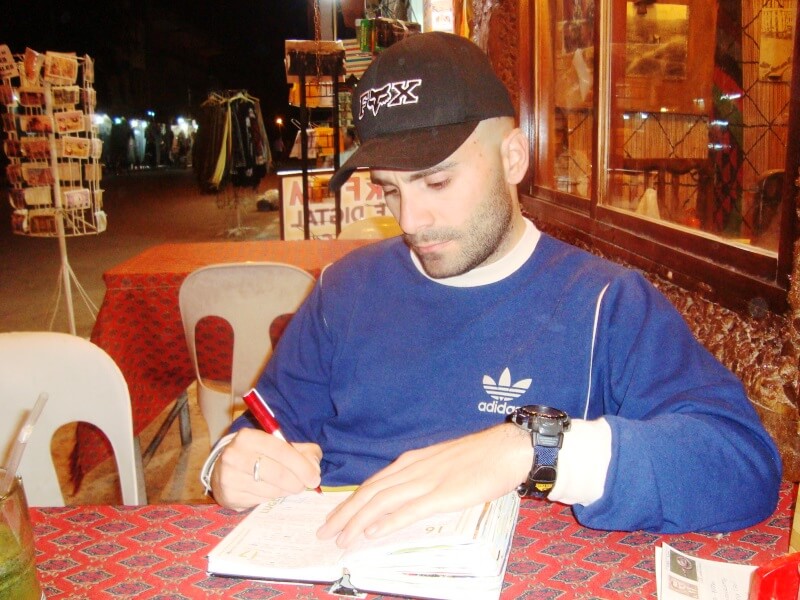
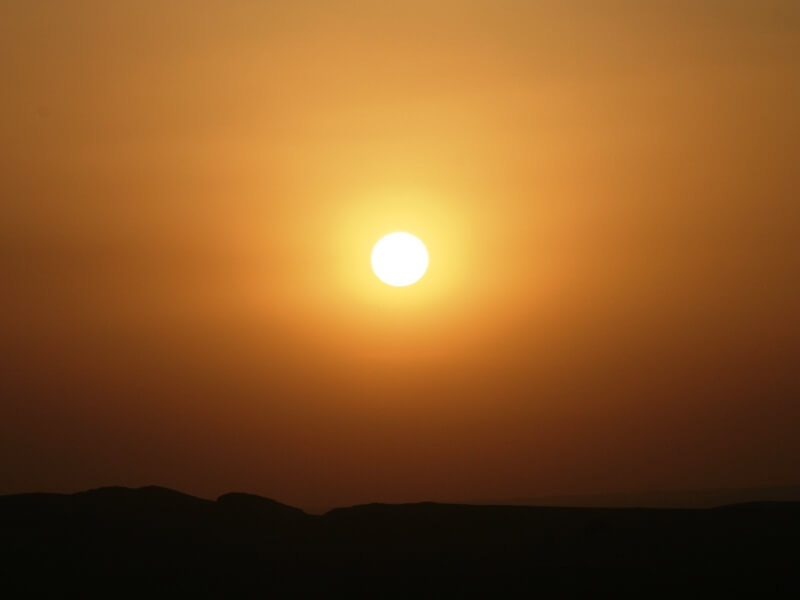
Leaving Palmyra, we head south while the road signs continue to remind us that we are getting closer and closer to Iraq!
The landscape begins to change suddenly, a plain of rocky desert becomes the only monotonous background colored only by the gray strip of asphalt of the only road ...
The geographic map of Syria seems to slide under the wheels of our little white van.
With a sweltering heat (the thermometer on my watch showed 41 °) we first landed at Dura Europos, an ancient fort now reduced to a heap of large stones, from there I reached a hill overlooking the mythical Euphrates river to meditate ...
Shortly after we arrive in Mari. A 5,000-year-old Hellenic-Roman town. I stop for a while with our driver to enjoy a mint tea, in the shade of a large tree with what appeared to be the village chief! I was delighted to observe how their life flowed in that warm village in the middle of nowhere, just 8 km from the Iraqi border!
The women and girls of the house who, covered by their veils, worked: those who swept using a huge palm leaf, those who mowed the grass, those who looked after the chickens, all while a horde of noisy children ran and screamed everywhere !
The journey back to Deir ez Zur was very intense. From the window of my bus I watched the many fragments of their daily life pass before my eyes.
The women walking with huge bags in perfect balance on their heads, old men with red and white kefia sitting smoking the hookah, children working in the fields ...
The journey is not simply moving from A to B. It is not just going. It is going with the body and returning with the soul and with the thought. While traveling with the body, the soul makes, in a purely scattered order, a journey within itself, the one it has experienced, loved, suffered, hated and tasted, retracing its steps several times.
In front of infinite and immense landscapes, which the geography of our beautiful country can hardly give us, we get lost beyond the horizon and the mind is free to wander between the blue of the skies and seas and the ocher of the deserts, softened by the green of the oasis, from the beauty of the flowers that act as a balm when you think back to difficult moments. And out of your own world you understand yourself more, putting yourself to the test, far from your own points of reference.
… and finally we land in Aleppo!
Aleppo immediately struck me for the diversity of its inhabitants ... Accustomed to seeing women and girls wrapped in their chadors and hidden by their veils, meeting many dressed in "western" style, it surprised me so much.
They are still very far from being able to consider their look: trendy, at the moment they are very kitchy and quite out of place ... but there is clearly a profound mutation, a great change in future generations ...
Aleppo, due to its proximity to Turkey and therefore to the West, is the least "Arabian" city I have visited ... It is even less so than the capital Damascus itself!
Rivers of yellow taxis trumpeting, railings that house freshly baked Arabic bread that cools and is dressed with urban smog, sellers of gold-plated watches, the voice of the muezzin filling the air, women in veils surrounded by hordes of noisy children strolling around, girls chatting to each other handling their mobile phones in plain sight, very tacky women's underwear shops, corncob peddlers screaming at their wares, policemen in very colonial uniforms who confuse the already poorly disciplined at traffic lights drivers, antique scooters whizzing by carrying three or four children or even entire families….
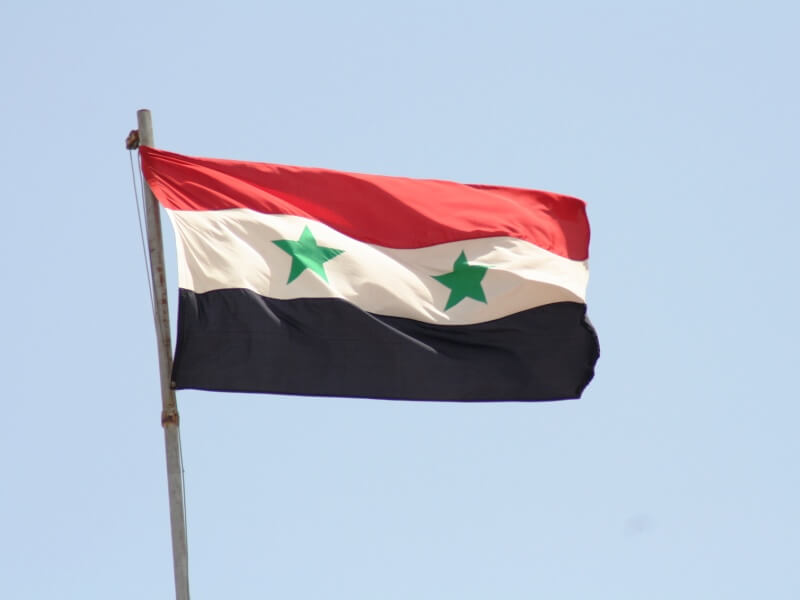
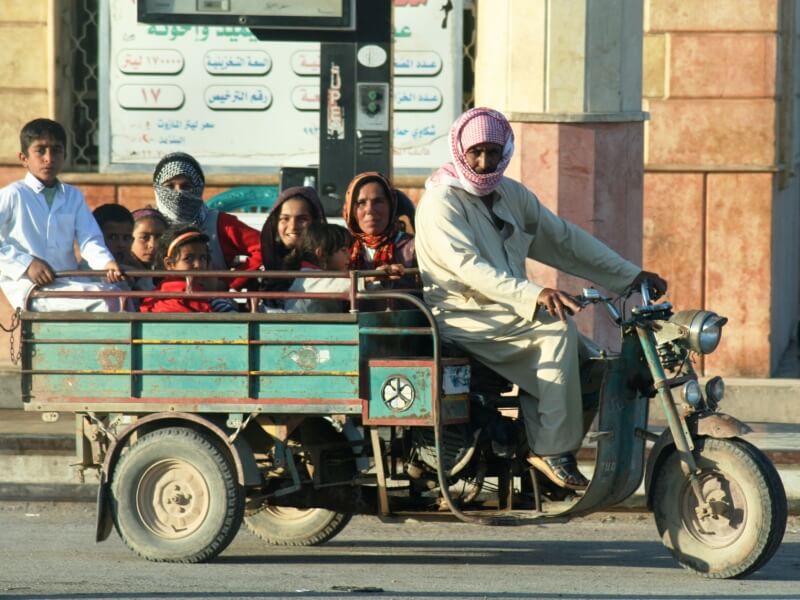
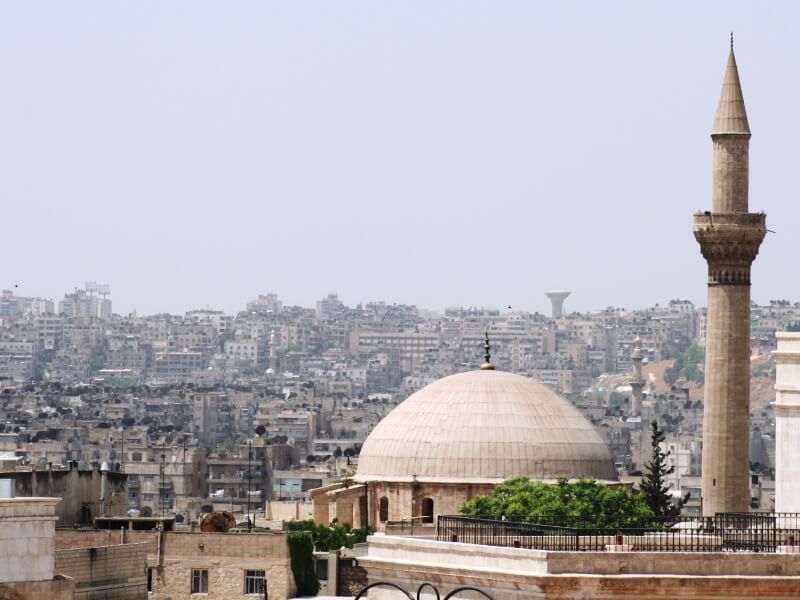
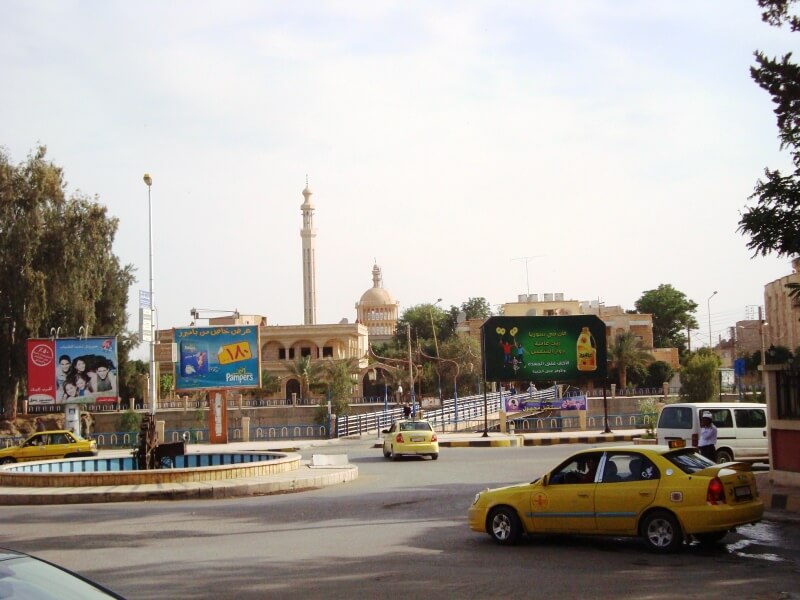
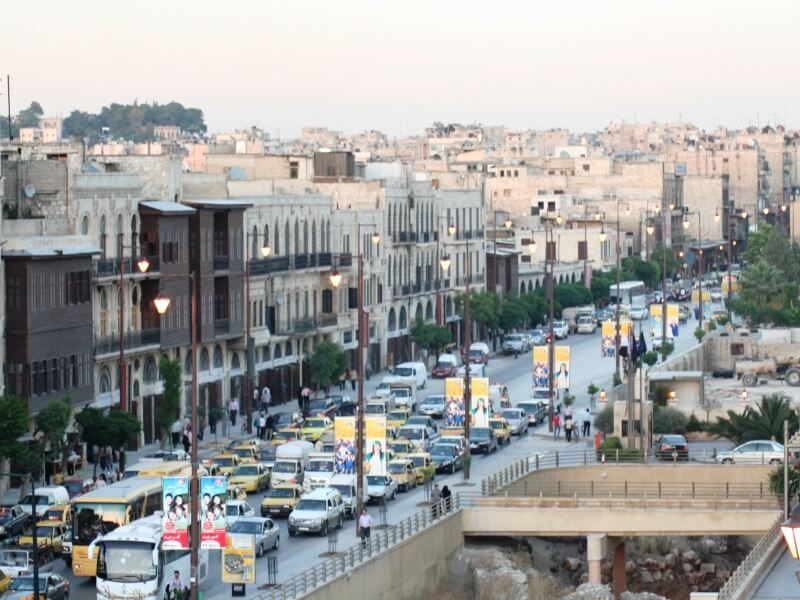
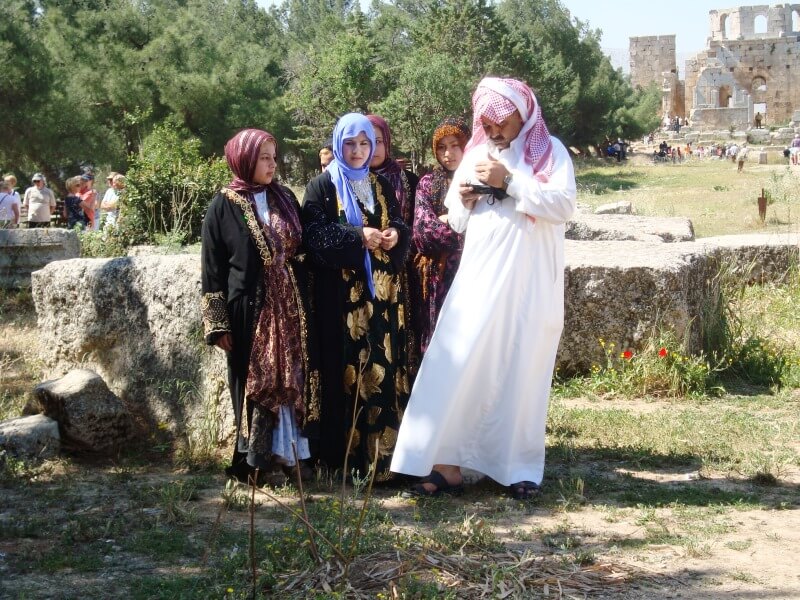
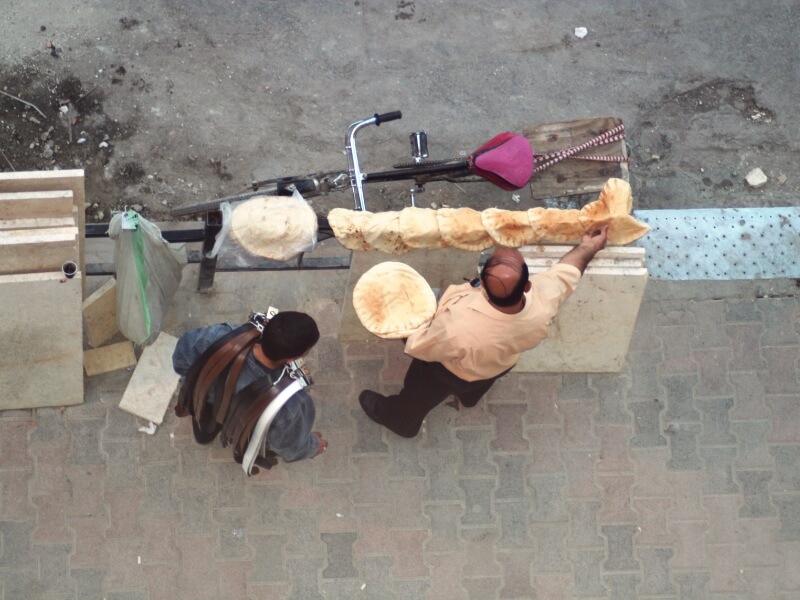
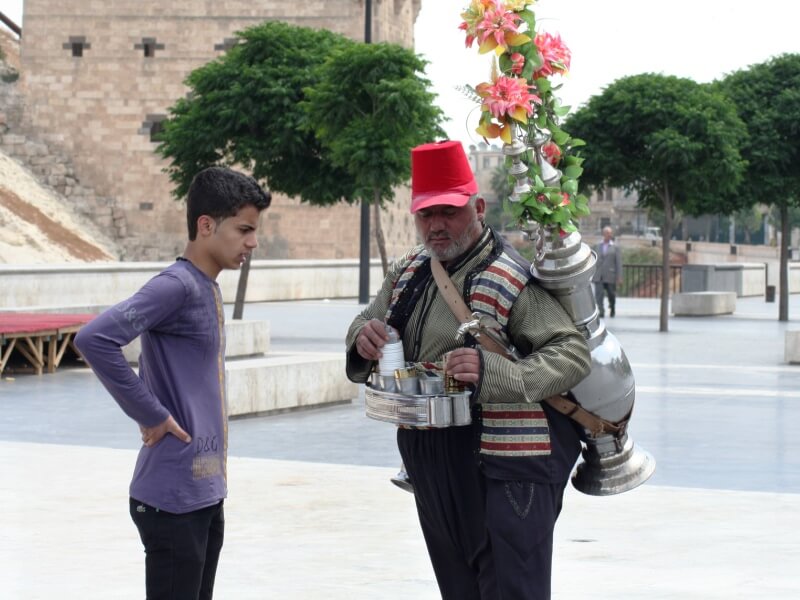
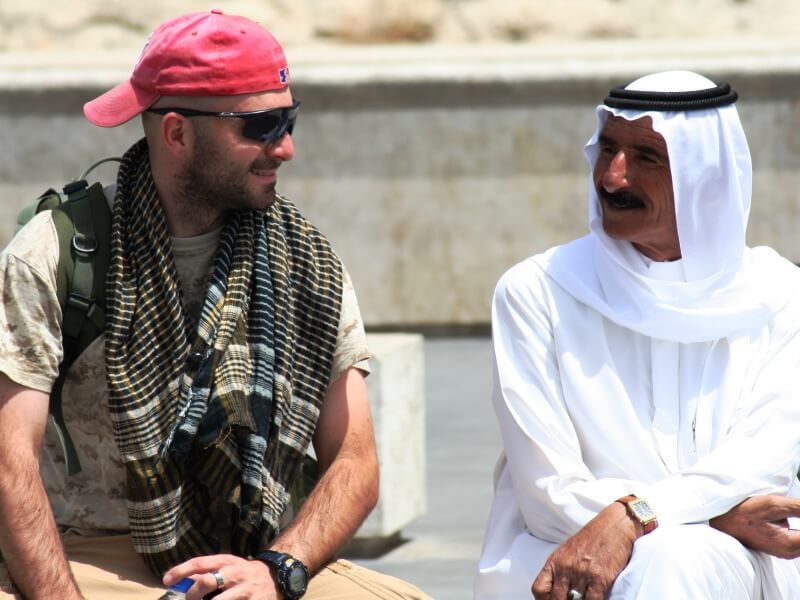
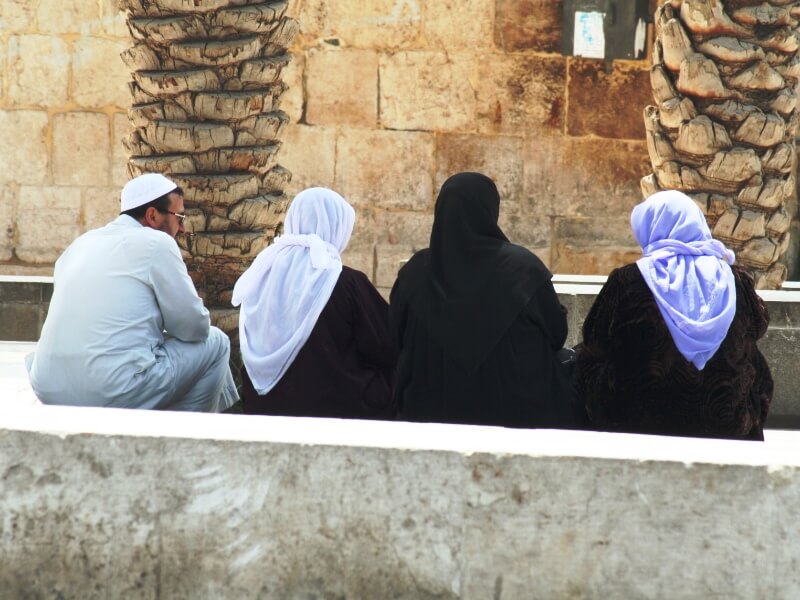
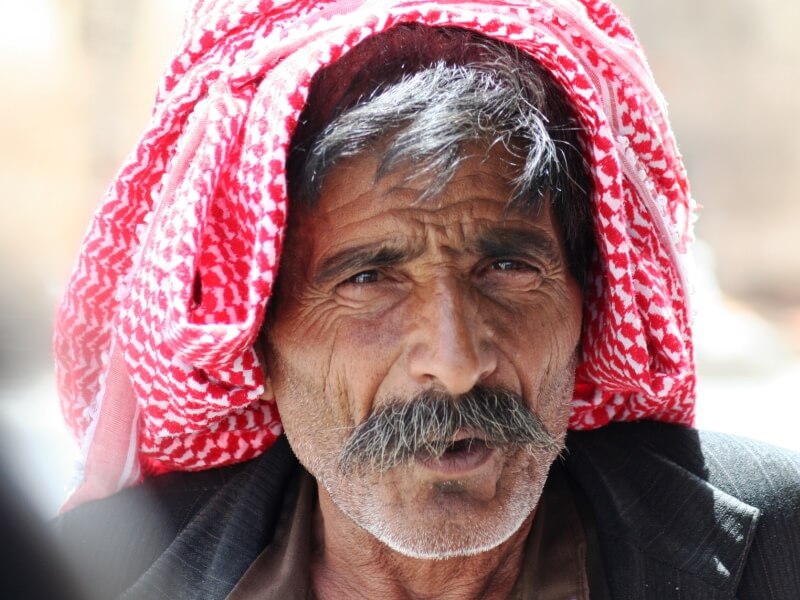
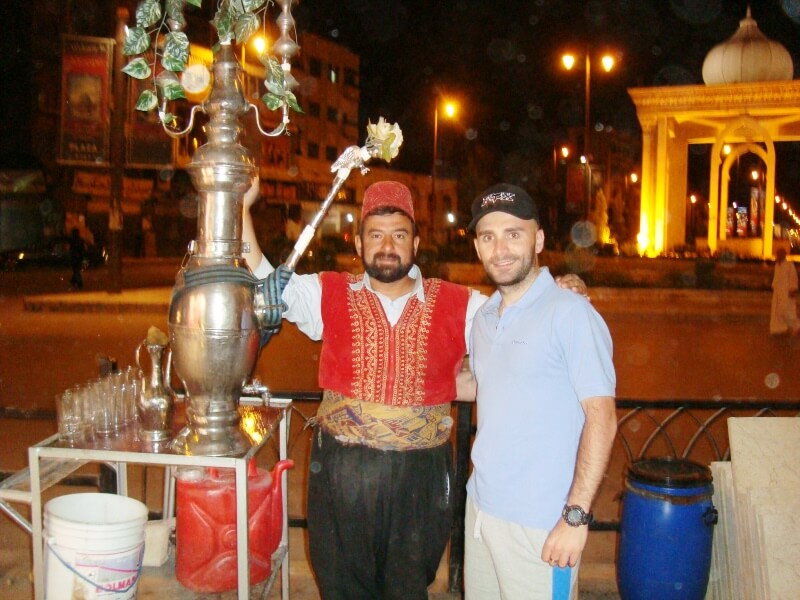
In the afternoon, after the view enjoyed from the top of the church of San Simeone, we reach the legendary Ebla.
Sergilla is the best preserved "dead city" and now recognized as a UNESCO heritage site. The so-called "dead cities" of Syria date back to the Byzantine period and are located in the area between Aleppo, Antioch and Apamea, located on a limestone massif.
Sergilla had also become an important resting place for pilgrims, an obligatory stop in a poorly built area.
Starting from the 7th century, the continuous wars led to the total destruction of the vines and olive trees, a source of livelihood for the population. For this the cities were gradually abandoned forever. Hence "dead cities".
Friday is their day of rest and the Aleppini take advantage of it for a picnic out of town.
They organize themselves with the head of the family's open van and all these women with veils and their cheering children leave to reach the outskirts of the city ... they spread a tablecloth under a tree, it doesn't matter if they are placed along the highway or in the parking lot of a small factory. , they eat what the various women of the family have prepared while the children play, have fun, chase each other and go wild ...
Visit to the citadel, that is the fortress that dominates the town of Aleppo from a height ...
What a lovely view! All made even more mystical by the litany of the muezzin who began his sermon at 12.00 sharp: "... Allah Akbar ..."
We immerse ourselves 100% in the large, labyrinthine and disorienting souk. I was wandering around with Alaa looking for a Syrian badge for my backpack, chatting with Fadir, the long trades with the many nice, warm and generous Syrians ...
I can truly say that I spent a whole day chatting, joking, observing the various traders, from spice sellers to pashminas, from hazelnut sellers to those of the famous Aleppo soaps!
Many hours spent in that intriguing labyrinth and at the end, as we were leaving, there were already those who called us: "Italians, Marhaba!"
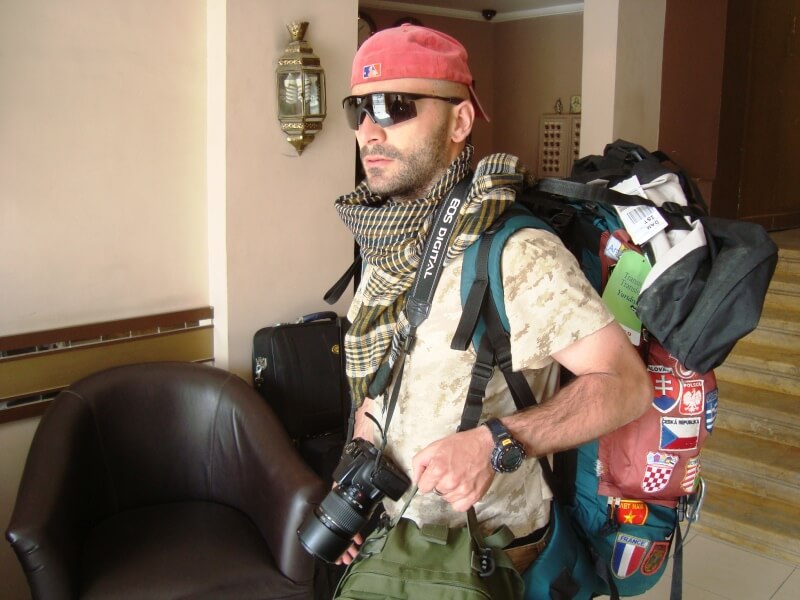
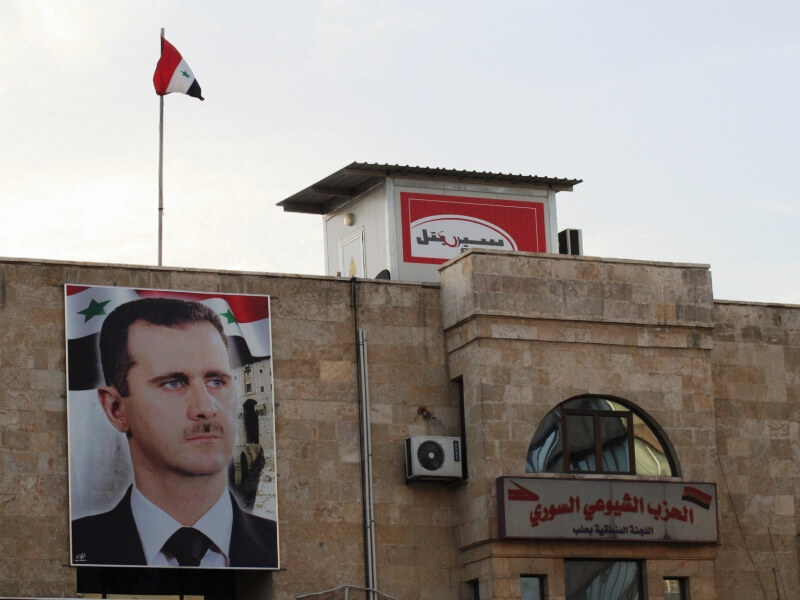
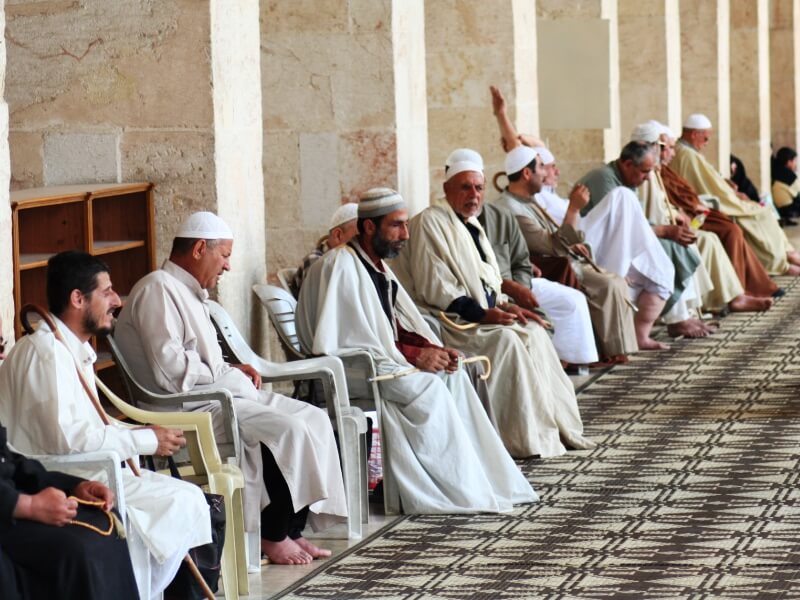
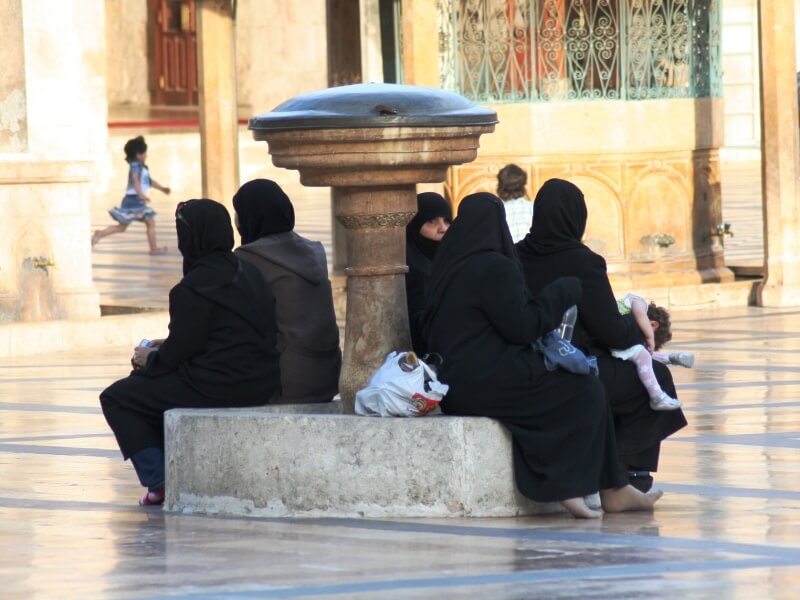
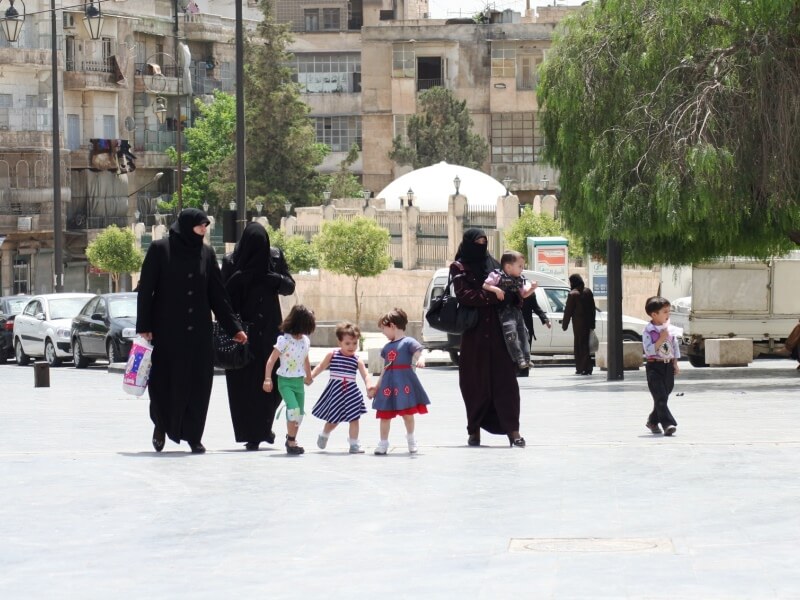
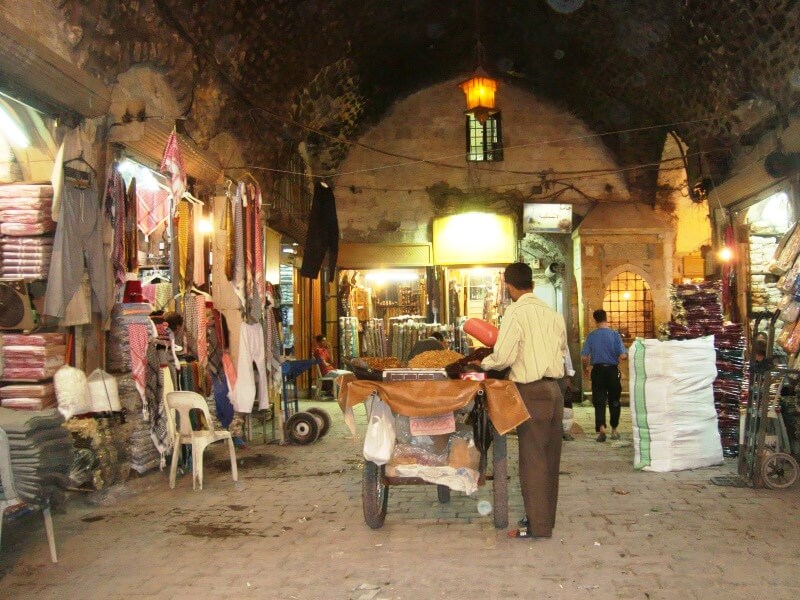
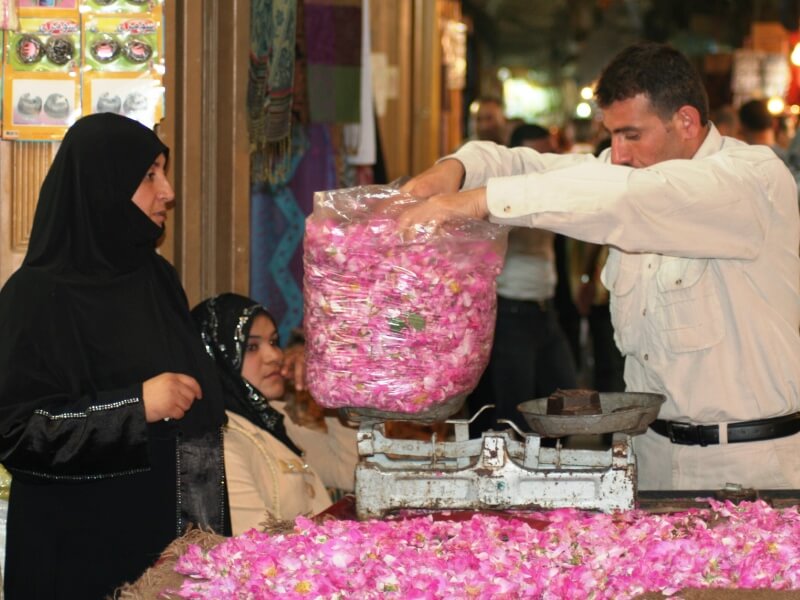
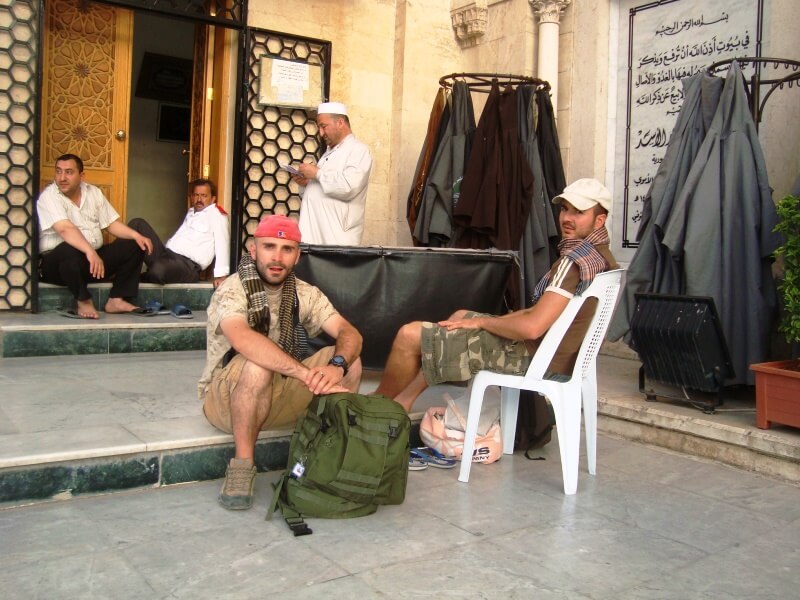
Unfortunately we all know history and, only a few months after this wonderful journey, destruction and terror have become the protagonists of Syrian daily life. The gazes of those children unaware of their sad future are forever imprinted in our eyes and hearts and the hope of global peace is always our daily prayer! See you soon Syria!
Error: No feed found.
Please go to the Instagram Feed settings page to create a feed.